

Genevieve Stengel Walsh's Story
Hill City Telephone Exchange, 1933
Photographs of the Area
Letter From Katie
"The Hill City Story: A Place of Opportunity"
Hill City Telephone Exchange, 1933
Photographs of the Area
Letter From Katie
"The Hill City Story: A Place of Opportunity"

Interviewed July 31, 1996 by Anastasia 'Stacy' Vellas of Swatara
Transcribed & Edited by Anastasia Vellas (stasia6@earthlink.net)
Proofed by Bill Farris
I was born February 22, 1906 in St. Peter, Minnesota. My father, Andrew Stengel and my mother Bertha Kersadis Stengel moved to Big Fork Minnesota when I was about five years old, and we moved to Big Fork by train. We came into the town of Big Fork; family, furniture and all, on the train in 1911. It was a novelty for the people of Big Fork to see us come with all of our furniture on the train. I remember it seemed the whole town came out to watch us unload. We left all of our relatives in St. Peter.
We couldn't find a place for our barbershop in Big Fork. The hotel owner didn't want to sell but would like for someone to take it over. So my folks took it over and ran the hotel.
My sisters were older. The one next to me was seven years older than I, so they both helped my mother cook and run the hotel. My dad used one of the hotel rooms for his barbershop. I don't think my brother was with us at that time. Later on he learned the barber trade.
Big Fork Minnesota is quite a town now. They have expensive hotels there now. It has everything. The surrounding woods are stocked with plenty of wild animals for hunting. The hunting and fishing have put Big Fork on the map. We lived there for awhile and then Dad took a trip to Hill City and thought that it would be a better location for a barber as Big Fork was very small at that time. We moved to Hill in the 1930s.
I grew up in Hill City Minnesota. As we grew up, we learned the barber trade by working in the barbershop. I ran many errands for my dad. Dad decided he wanted me to be able to drive our car and he had me behind the wheel when I was still very young. I was the first girl in this whole area, including Duluth, that drove a car. Women just didn't drive in those days and people were shocked that I could drive when I was only fifteen. I often drove from Hill City to Duluth for my dad to pick up supplies for the barbershop. In this way I believe we lived a very different kind of life, very much out of the ordinary as to the way other people lived for those times in Minnesota.
I went to Hill City High School. I didn't run around much as I was always busy working. We did go to a few activities. We might go to a dance. We would finish work and then go to the theater around eleven o'clock and sit in the back and catch the tail end of the dance.
My parents didn't go to dances, just my sister and I. I drove the car, which meant nobody could ask to take us home. We had the car to take us home. The nice thing was that it protected us.
Always we were always busy, busy. My older sister would come home to visit and she and I worked in the barbershop. Not only did we have a barbershop, but we also had the recreation room in the next room where we sold ice cream and candy. Later on the folks put in a lunch counter. We had to work long hours. There was no set closing time at our place. We worked until all the customers left. Then we would clean up and get ready for the next day's business. But we didn't have to stay there all the time. We had other duties. One was to get up in the morning and go to school. It was before and after school that we would work in the barbershop.
The Wooden-Ware Factory was in Hill City at that time. We stayed busy taking care of the needs of the people who worked there. The factory made many things out of wood. They made wooden drums for pickles, wooden cups for peanut butter and cracker barrels. They made wooden pails. I never worked there. I just visited the factory. The factory made barrels out of staves. We could buy and burn the staves that weren't perfect. We would buy a pile of culled staves. The staves were different sizes. Some were long and some shorter. We cooked and heated with them.
Sometimes the family went back and visited our relatives in St. Peter. That is where we came from. We moved to Northern Minnesota because of my brother's health. He wasn't breathing very well and the doctors thought maybe the northern country would be better for him.
I did not ride the train very often. Once we rode the train out to Rabey. We went there to pick berries. We rode the train once or twice to St. Peter.
We didn't go too far in the car in those days because the roads were terrible. One time when I was small we went off the road and got stuck. We slept in the car all night until someone came along in the morning and pulled us out. Outside I could hear the wolves howling. The family told us it was only dogs barking. My sister and I were both so small we could sleep on those car cushions.
One time when I was older I took my Mother and my sister and we drove to Deer River. The county was working on the road so we had to take a detour that went by way of Jacobson. Returning on the unfamiliar road, we lost our way. So we slept in the car that night, as much as we could sleep, that is. If one of us got chilly, I would start the car up and drive back and forth down the road to warm us up. In the morning we drove into Grand Rapids and ate breakfast. My sister and I got home just in time to wash up and dress for school.
It was always an adventure with Dad. He liked to go places. We would take us to the Grand Rapids Fair early in the morning before he opened up his business. We would take all of our friends that the car would hold. Other times he would ask young fathers in the neighborhood to take us to the fair or bring us home. Dad often made arrangements with the people that owned the restaurant next to our barbershop, who were going to the fair, to take all of us with then. Then Dad would close the barbershop, come after us and bring us home. Not many parents would do that for their kids. So we were always happy to help him. He was a barber. He wasn't much for common labor. He would rather go places. I pitched in and helped out a lot in the shop. I always liked to work. No one told me to work. When I saw something that needed to be done, I did it.
We used to swim in Hill Lake in the summer and we would go sledding in the winter. Hill Lake is a good lake. You don't have to walk forever to get out into the deep water to swim. We didn't swim where the rest of the town swam. We walked farther down the side of the lake where we could get to the "drop off" into deeper water quicker and we would just take off and swim.
The other kids in Hill City always used to seem to have younger parents. I used to think that was funny that I got old parents.
We used to take our suppers outside just as soon as a little spot of green grass came up in the yard. We'd sit out there on the grass and eat. "Oh," my dad used to say, "Oh, did you see there, up on the hill back of us, that little patch of green grass. Isn't that tempting to you?"
I was always skinny. It was probably because I was a finicky eater. Mother said I started eating better when we started cooking outside in the spring. We would take hamburger and potatoes and onions outside and we cooked that in a kettle over a fire. And just because we cooked it, oh ~ we thought it was so delicious. Eating our suppers outside was the big thing. Kids don't do that now. We had other things to make us content in those days. We and our pals, oh, we were always busy.
The theater was just across the street from our barbershop. So, often, after we closed the barbershop, we helped clean up the theater after a movie or a dance. We'd fold up all the chairs, sweep, and help baby-sit their little girl.
The Abrams had the theater. Mrs. Abrams played the piano for the movies. Those were silent pictures with just writing on the screen. When we were very young, my older sisters used to like it when they could get away from us because when the words came on the screen we couldn't read it. We'd say, "Read it, read it, read it," which embarrassed my sisters. Oh, we made them read everything. So they would sneak away from us if they could. I don't blame them.
There used to be box socials, but they don't have them anymore.
One fellow had just taken over one of the stores in town. He volunteered to help out at the Methodist Church and began taking care of the furnace in the basement. He filled the furnace with wood on Saturday night so it would be warm in the morning for church and Sunday school. But he loaded it with too much wood. I was teaching the boys' Sunday school class. We would meet in the furnace room. We came there one morning and the furnace room was so hot you couldn't breathe. When you touched the chairs they were hot. I could smell a little smoke, too and it scared me. I told the boys, "We aren't going to have class in here." We moved to another room.
When Sunday school was over that day, I mentioned it that the furnace was very hot but I was kind of shy, and they didn't any pay attention to me. In those days a woman didn't know anything about things such as that. I thought, "I'm not going to make a big issue of it." I wish I had nerve enough to stand up there and say they were in danger. The men should have noticed that unusual heat. I sat in the back of the church where it was cooler. In the end we lost the church. During the night it caught on fire. No amount of water could put the fire out.
I don't know why the old drug store burned. For a while when they first started using wood staves we had a lot of fires. People used to have big furnaces. They would throw huge amounts of wood in the furnace and the fire would just roar. Also, around the chimneys there had to be enough tin to keep the upstairs from catching on fire. That was another fire hazard. We don't seem to have fires like that any more. They have different kinds of furnaces now.
I married William John Walsh September 21, 1930. We began our life together in Hill City.
After we bought this house, we had this hill bulldozed a couple of times to smooth off the front yard and then the back yard slopes until it is almost level.
When McNeil built that two-story building, he went over some of the hills facing the west and leveled them into more of a slope. We would have liked to bulldoze more of the area behind our place.
When we got this house it had only two rooms. We built on by degrees. I always said it kept me from landing in the loony halls. I had five children and the oldest was only six and a half. Carol was born in 1931, Gerald in 1932, Corice in 1934, William in 1935 and Jon in 1937. There were two girls and three boys. I wasn't used to being around so many children. I tell you, I did a lot of praying. I sure prayed. There were times when I almost couldn't deal with all the commotion. I wasn't raised with all that turmoil.
When I couldn't stand it any more I'd say to the kids, "Get down on your knees at a chair, we're going to pray." We prayed and the Lord gave me strength to go on. That's why I am still here.
I've had no easy road. My husband was one who couldn't say 'no' to anybody. Hard times make you stronger. I had it a little better because my folks were in business and I got clothes cheap. I used up all the old overalls in the neighborhood for patches on my children's overalls. When the WPA had the women's sewing project during the 1930s, I ordered three yards of denim to patch my kids' clothes.
My son, Willie used to say, "Mother, we're the most patched kids in town!"
"Yes," I said, "And be glad it isn't holes."
I didn't work outside the home. I had enough to do at home. I baked so much bread. I had such bread eaters. I went to the Missionary Alliance when we had that in Hill City. When they had Vacation Bible School, we adults would take an extra child to our home. We had to have lunch for six children and then we would take a lunch for one of the teachers. Oh, boy, I sure made the lunches with my home-baked bread. One time after lunch was over and we had the program one day, one of the teachers came running up to me. She said, "I've come to apologize."
I said, "What do you have to apologize for?"
She said, "When the bell rang that we were supposed to go eat, I ran as fast as I could run so I could get there in time to choose your lunch so I could eat your homemade bread."
I always loved to bake bread. I decided I wasn't making bread unless I could make "good" bread. I always used Russet potatoes and potato water. And I even put a little of that in with the sweet breads. The minute my bread was raised I put it in the oven to start baking. It always raised just a little bit higher right through the center. I put four loaves in the pan because I liked the texture better. If the loaves raised a little higher in the center when they began baking I knew my bread was going to be good.
I've told my kids to this day that I always baked and cooked, as much as I could, the things that my family liked. There wasn't anything my family liked that I wouldn't fix. My one boy said, "Oh, Mother, but it sure tasted good." I wouldn't do it again.
My oldest sister used to say, "I sure feel sorry for your boys when their wives cook for them." Now I don't care for cooking any more. I never made scones from bread dough.
When somebody had a birthday, they would call me and ask me to make the birthday cake.
After I was married and had children of my own, the neighborhood kids would come to our house and roll down the hill in summer and then slide down my hill in winter. I had to put a stop to it every once in awhile. The kids from town would come there to play on our steep hill. I said, "There's lots of hills in Hill City. There's no sense in just sliding on this hill."
If they behaved themselves, I didn't say anything. But it got so they would get in quarrels and then they began to snoop in every outside building to see if they could find something to slide down the hill on. Then they would leave it at the bottom of the hill and go home. Then I did get angry. One day, my husband who never liked to discipline went outside and they sassed him. I didn't like that.
They started to get into a lot of mischief. It got so I couldn't go down town when I wanted to. I had to stay and guard my place. That was when I went over to the school, which was just behind my house, and told them I didn't want the kids over at my place at recess or noon or any time when they are supposed to be in the schoolyard.
"You tell them in the class rooms not to come over to my place during school." Outside of school time the school had nothing to say. I put a stop on their coming over during school hours.
My kids were always at home. When they got too noisy, I told them, "Go out and slide." Then other kids started coming around. They had a good hill in the park. It was a good hill and it was a longer hill. But, no, they liked our hill.

The Walsh Home in Hill City
Stacy says: The Walsh family was having a moving sale at Genevieve's house in September 1996. She went through her belongings and she said, "Those hats are too nice just to give away. I'd rather donate them to the historical society where they will be preserved. They've been very well cared for."
I drove Genevieve Walsh to the Aitkin Historical Society at the Aitkin Depot. "Now I don't even have a car," she told me. "I have one but it is sitting in the garage." She donated her collection of hats to the Aitkin Historical Society. She kept one or two for her daughter. She kept the hat with the fur "In the 1930s and 1940s," she said, "We wore hats and gloves."
"The winter days in Minnesota are short and cold," she told me. "I never liked that kind of weather. My family all moved to a warmer climate."
There are new people living in the house on the hill across from the motel today. I visited Genevieve Walsh when she was living at the Manor in Grand Rapids. I lived in her house the summer of 1996 while she was at the Manor.
Genevieve Stengel Walsh passed away on July 28, 1998. She is buried in Macville Cemetery, on Highway 169, next to her husband William Walsh, who passed away May 13, 1972.

Hill City, Minn. March 1933
contributed by Stacy Vellas
| -A- | |
|---|---|
| Allin, F. W. | 5 |
| Arens, Theo. | 38 |
| Arnold, F. N. | 89 |
| -B- | |
| Beerbower, C. W. res. | 40 |
| Benes, Frank | 143 |
| Berg, John | 4913 |
| Brusegaard, Thos., Office | 24 |
| Brusegaard, Thos., Res. | 47 |
| Butts' Farm | 1312 |
| -C- | |
| Childs, Leslie | 1324 |
| Christensen, Harry | 41 |
| Clark, Fred | 454 |
| Commercial Hotel | 3 |
| -D- | |
| Dale, W. N. | 42 |
| Daily, George | 51 |
| Davis, Mann | 136 |
| Day, Mrs. Ottie | 43 |
| Dobelstein, Rev E. G. | 21 |
| -F- | |
| Fleming, Lester | 816 |
| Fleming, Walter | 147 |
| Foix, Art | 1416 |
| Foix, Ernest | 1316 |
| Foust, Bert | 138 |
| Forest Service | 22 |
| -H- | |
| Hale, A. D. | 23 |
| Hankerson, Geo. | 26 |
| Hartman, Rev. Elsie | 33 |
| Heuer, F. H. | 30 |
| Hill City Creamery | 50 |
| Hill City Mercantile | 16 |
| Hill City News | 7 |
| Hill City School | 6 |
| Hughes, Tom | 27 |
| Huntley, Gay C. | 36 |
| -I- | |
| Ill, Leo | 146 |
| Ingraham, W. P. | 497 |
| -J- | |
| Jellum, 0. N. | 137 |
| Johnson, H. I. | 25 |
| Johnson, Oscar | 132 |
| Jones, H. M. | 17 |
| Jones, Earl | 133 |
| -K- | |
| Kaiser, Charles. F. | 322 |
| Keenan, G. E. | 4 |
| Kutcher, William | 1418 |
| -L- | |
| Lakeside Garage | 15 |
| Leibold, Jeff | 824 |
| -M- | |
| Mack's Service Station | 20 |
| Maki's Market | 122 |
| Maki, G. K. res. | 123 |
| Manz, Henry | 87 |
| Martin. J. J. | 492 |
| Myhr Hardware | 19 |
| -N- | |
| Newhall, Webb | 86 |
| Newton, Vern | 496 |
| -O- | |
| Olin, Carl | 34 |
| Olson, Chas. A. | 148 |
| Olson, Olaf L. | 142 |
| -P- | |
| Peterson, Ed | 184 |
| Pfitzenmaier, Frank | 83 |
| -R- | |
| Rabey, E. S. | 35 |
| Rabey, R. M., Resort | 323 |
| Ramey, Ray | 84 |
| Richard, G. A., Res. | 93 |
| Richard, G. A., Store | |
| Ryden, Gunder | 1110 |
| -S- | |
| Sailer's Barber Shop | 52 |
| Sandberg, G. A. | 46 |
| Schoen Pharmacy | 18 |
| Schoen, Wm. A. res. | 37 |
| Stewart, Miss L. M. | 29 |
| Sutton, Ed | 88 |
| Sutton's Store | 39 |
| -T- | |
| Taylor, L. L. | 2 |
| Tower | 113 |
| Turner, Elmer | 82 |
| -W- | |
| Wallace, Frank J. | 48 |
| Walker, H. R. res. | 28 |
| Wilson, Lester | 498 |
| Wynkoop, A. J., Res. | 443 |
| Wynkoop, Service Station | 442 |

A PHOTOGRAPH ALBUM

Hill City
This picture of Hill City
(pre 1912) was taken from the water tower at the Wooden Ware Factory looking
west.
Contributed by Ronald Parker


This picture of Hill City (pre 1912) was taken from the water tower at the Wooden Ware Factory looking west.
Contributed by Ronald Parker
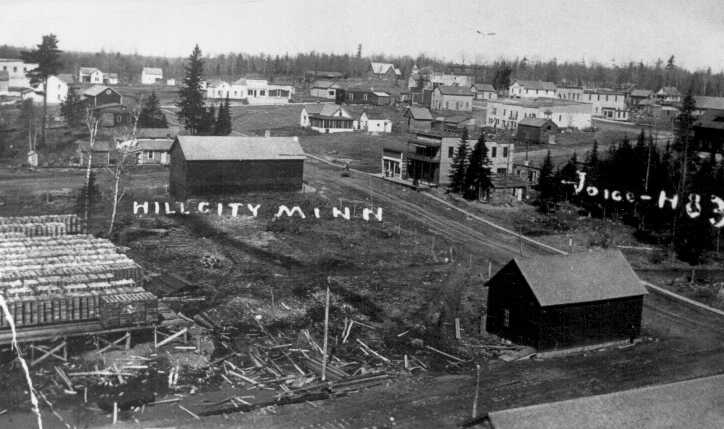
Contributed by Ed Montgomery
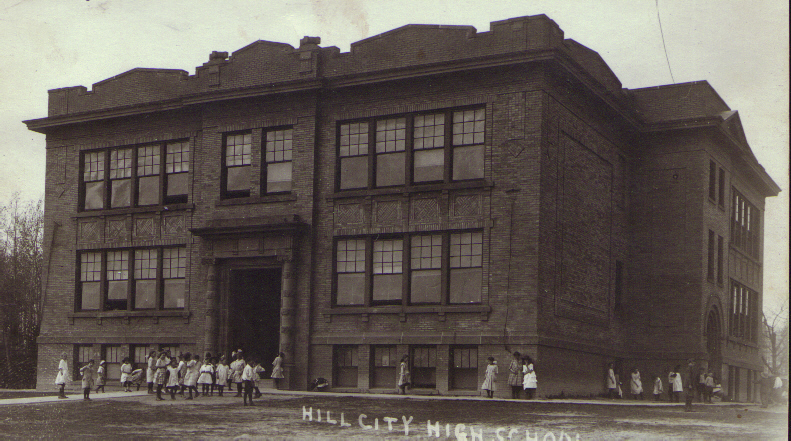
Contributed by Ed Montgomery
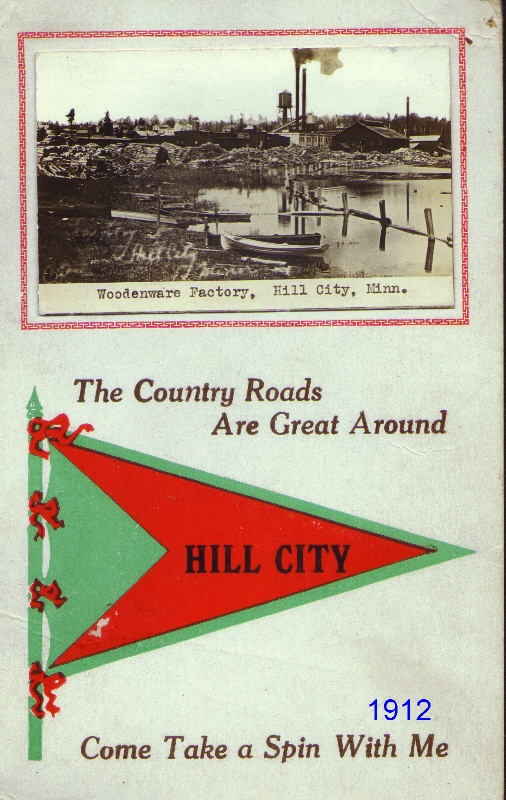
These pictures were taken from the rail road trestle over Hill Lake facing west: in order from south to north.
Contributed by Ronald Parker
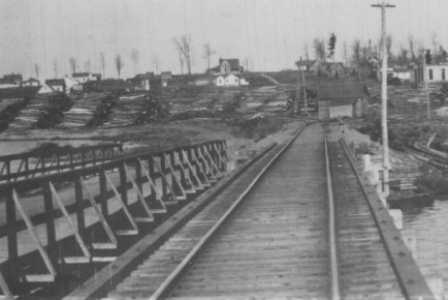




I think this site is amazing, but I am very confused. I don't understand how my town was such a business town, and now it is just some town with almost zero industry. I would love more information about Hill City's past.

Excerpt from "Beyond the Circle"
by Leo Trunt
Published with Permission of the Author
Transcribed by Karen Klennert
For Purchasing
Information, Contact Leo Trunt

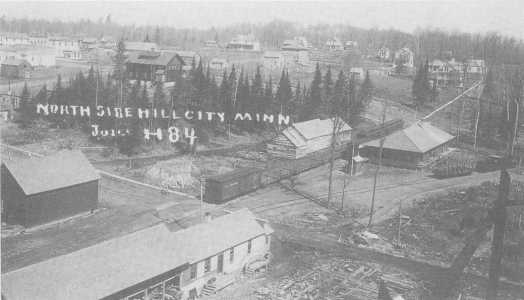
View of Hill City and the Depot, Looking North, 1915
Courtesy of Jim Raich
Hill city has had a rich and colorful history. So much has transpired through the years, that to record it all would fill several books at least. This chapter will try to hit some of the highlights.
The native Americans recognized that the Hill Lake country was a choice area in which to live. Hill Lake had an excellent fishery, and the natives used the lake ane nearby rivers as their means of transportation. Not much is known about these native people, but there was an Indian village at the head of the lake. Government surveyors noted in the 1870's that the Indians were traveling from Pokegama Lake through Hill Lake and on to the south towards Esquagama Lake and beyond.

Map of Hill Lake Area, 1870
One historical account relates: "Early residents reported hearing that many of the local Indians were killed by smallpox. The smallpox epidemic raged through most Minnesota Indian villages. The Indian village on the north end of Hill Lake had a graveyard or Indian burial mound that was visited by Indians for ceremonies as late as the 1890's...A trading post was located at the north end of Hill Lake about 1847...The post was located south of the Indian burial mound and village. This place was noted for winter and spring camps of the Indians. They fished at the head of the lake, trapped, and in the spring they made maple syrup near Mr. Ash Lake. In the fall the Indians rived in the Moose Willow are. Oscar E. Garrison, surveyed Hill Lake in June and July of 1869....Garrison reported that the survey crew fed on the Muskies they caught in Hill Lake." (History of Hill Lake by Paul Bauer)
To the south of Hill Lake was the great hill know to the Ojibway as Pikwadina (or Piquadinaw), meaning "it is hilly". Hence came the common name "Poquodina (or Quadna) Mountain" used by the lumbermen and was given to this hill on the map of Aitkin County in the Minnesota Geological Survey. ("Minnesota Geographic Names" by Warren Upham).
The loggers came to Hill Lake soon after the government surveyors finished their work. The Morrison Brothers were working their way up to the Hill Lake area when they started their logging operations on the Willow River in 1876. (Mississippi River Lumberman ~ December 1, 1876) Joseph Dam cut 800,000 feet of pine along the Hill River during the winter of 1876-77 (Mississippi River Lumberman ~ April 27, 1877). During the winter of 1878-79, R. Hamilton had a camp on Hill Lake that consisted of 15 men and 10 horses on the Hill River that same winter. (Mississippi River Lumberman ~ December 6, 1878). The "Mississippi River Lumberman" ( a lumber-man's trade journal) estimated that in the winter of 1880-81, there was 25 million feet of pine logged on the Willow, Moose and Hill Rivers. (Mississippi River Lumberman ~ April 29,1881) The winter of 1884-85 saw more timber cut along Hill Lake and River. Chase and Miller (13,000,000 feet), Wiggins and Mitchell (200,000 feet), Napoleon Russell (800,000 feet), and the Eastman Bovey Company (1,700,000 feet) were making big strides in the timber stands in this area. (Mississippi River Lumberman ~ April 17, 1885)
It was about 1890 when the Morrison Brothers set up their logging camp along Morrison Brook that flows into the south end of Hill Lake. Here they operated their camp for a number of years which consisted of 17 buildings. A sawmill was built on Hill Lake near Hill City that was later purchased and merged with the Woodenware Pail Factory. Another large sawmill was located on the north end of Hill Lake and a smaller one on the northeast side. A shingle mill was located near the Glen Harcey residence. About 1900, Al Wandel was hired to burn the large meadows to be used for hayfields.(History of Hill Lake by Paul Bauer)

J. M. Wood Company Sawmill (left) and Hill City Boat House (right), 1908
Courtesy of Walter Schularick
For a time, a steamboat operated on Hill Lake, which was used to move rafts of logs and also to bring people from the north end of the lake to the south end where the village was located. "The company (National Woodenware) provided a steamboat, named the "Cohasset," which they launched for towing logs to the factory from many parts of the lake north of the bridge." (Rumpus, by Billy Sea (Campbell) page 94)
A dam was built on the outlet of Maple Lake, which flows into the north end of Hill Lake, in order to flood the waters to higher elevations and to sluice logs down the narrow stream. Logs were brought down from Dinner Pail Lake where a logging camp was located on the east side of the lake. The loggers were finding it more and more difficult to be able to reach the timber by water. A dam had also been placed at the outlet of Hill Lake to provide huge volumes of water to raise the Hill River. One early account relates, "In spring streams were glutted with the growth from the forests as annual log drives made their way to the Mississippi River. A barrier was constructed of hewed timbers at the west end of the Pequadna Mountains, a short way from Hill Lake on Hill River. Two sluice-ways were notched and heavy planks fitted in the dam to raise the water as much as six feet. Another dam was made in Morrison Brook west of a straggling settlement later named Hill City." (Rumpus by Billy Sea, page 64)
By 1907, the logging companies gave up using streams to sluice logs, and the pine era ended. There were still large stands of hardwoods in the surrounding countryside, but how to get it out? Hardwood would not float like the soft light pine, so they could not be floated down the rivers to sawmills. There was the E. M. Parker sawmill on Hill Lake, but no way to get out the finished product. Roads were either non-existent or of such a tough character that this was not feasible either. The solution was to build a railroad.

Hauling Gravel for the Hill City Railroad, 1909
Courtesy of Elna Jellum
The leaders of the village of Hill City just had to find a way to bring the railroad to town. Had they waited a few years, they might have found it a lot easier to entice the new Soo Line Railroad to run a short line into Hill City. The Soo Line effort seemed remote at that time or perhaps was not even known to the Hill City folks as being a serious effort. So it seemed the only option was to run a line down off the Great Northern from the north.
Warren Rabey was one of the chief men involved in this effort. He convinced Julius Rolsholt to front the money necessary to get the railroad started. "Work on the railroad which is being built into Hill City is progressing nicely. Piling for a bridge across the Mississippi at Mississippi Landing where the road will join the spur of the Swan River Logging Company is driven, and the engineers have been working on the line for some time past, so that the line will be ready very shortly for the commencement of the clearing and grading of the right of way. At Hill City where the railroad will have to cross an arm of Hill Lake, the piling for the bridge has been hauled but will not be driven before the cars can bring in a pile driver of sufficient size to do the job....Julius and R. W. Rolsholt, wealthy bankers and manufacturers who are heavily interested in that section, and who will put in a hardwood factory like the one now being built at Cohasset, volunteered, after looking into the matter, to put up half the cost of such a road as is proposed if the balance could be raised by subscriptions by the land owners along the route. Two dollars per acre on the lands was the rate set, the subscriptions being paid for in preferred stock in the railroad company." (Itasca County Independent ~ April 2, 1908)
While Rolsholt considered building a woodenware factory, the idea was finally prevailed upon to the Armor Packing Company of Chicago. "Mr. Kaiser states that the Armor Packing Company is to begin building its immense factory and houses for employees at Hill City at once." (Hill City News ~ May 5, 1910) After having lost money on the railroad almost from its inception, the railroad was purchased from Rolsholt and company by the Armor interests in 1915. Work began in earnest, and the mill soon took shape. "The plans call for a heading mill on the lake shore 205 feet by 90 feet, a power house 72 feet by 90 feet, a fuel house 20 feet by 30 feet, a varnish house 30 feet by 30 feet. The main factory building consists of a tub factory 222 by 72 feet, a warehouse 160 by 65 feet, a finishing room 80 by 72 feet, and the dry kilns 110 by 154 feet. These, together with the present sawmill and office of the company makes the entire plant consist of nine buildings. Aside from these are the drying yards which cover a large area just west of the railroad, and the barn." (Hill City News ~ August 4, 1910)

Woodenware Factorie’s First Crew and New Buildings
Courtesy of Don Kaiser

A View From the Woodenware Factory, Looking South With the Sander Olson Sawmill on the Right, 1928
Courtesy of Don Kaiser
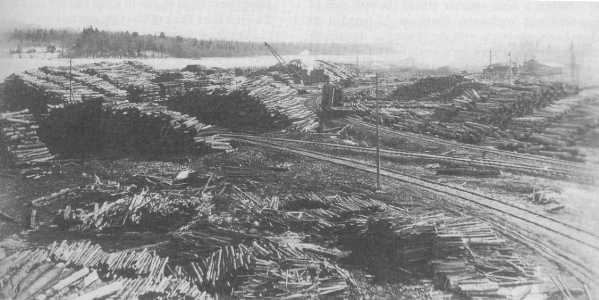
Another View of the Woodenware Factory
Courtesy of Bill and Esther Lange
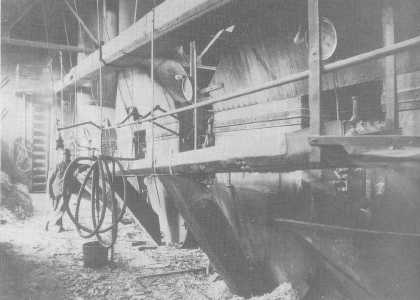
The Boiler System at the Woodenware Factory
Courtesy of Don Kaiser

View of the Powerhouse of the Woodenware Factory
Courtesy of Bill and Esther Lange

View of the Hot Water Pond at the Woodenware Factory
Courtesy of Earl and Marianne Lipscy
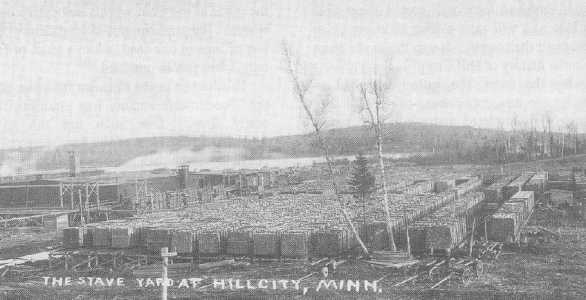
The Staveyard at the Woodenware Factory
Courtesy of Earl and Marianne Lipscy

Making the Bottom of the Tubs at the Woodenware Factory, 1920
Courtesy of Earl and Marianne Lipscy
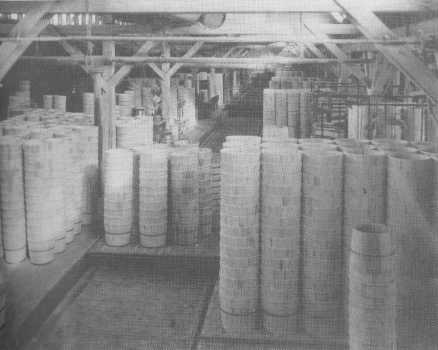
The Finished Product of the Woodenware Factory Awaits Shipment
Leo Trunt Collection
The factory meant a lot to the young village of Hill City. "Construction work on the woodenware factory is being pushed as rapidly as circumstances will permit. More men will be on the work before long and the plant will be in operation in the early part of 1911. The company will use 4 to 5 million feet of timber the first year and thereafter 10 million feet per year will be required. From 175 to 200 men will be employed, with a payroll of from $500 to $600 per day. Consider what this means to Hill City and the surrounding country. These people have to live, which means that the greater portion of this money will be circulated here. More business houses will be established as the need arises, farmers will come and develop the land and in a few years we will have a town and surrounding country that will be equal to any in the northwest." (Hill City News ~ September 22, 1910)
The approach of the first train as it came into town in 1909 from the east was a great event for the town's people. One resident recalled: "When a locomotive whistle sounded on the east side beyond the gravel pit, Charlie stopped his work at the booms and rowed the 'Garland' out into the lake in time to snap a picture of the first train rounding the curve as it came onto the bridge....As the train came into sight, naturally, there was a hullabaloo of excitement across the hill. Men reached for their hats, women snatched their jackets, kids yelled, dogs barked, doors slammed and walks clattered to the transit of hurrying feet. One can imagine there was more than an ordinary uproar in Smith and Taylor's store because it was their car of freight that was crossing the bridge." (Rumpus, by Billy Sea, page 69)

The First Train That Came Into Hill City
Courtesy of Bill and Esther Lange
The employees of the Hill City Railroad were a hard working bunch, but also had a little fun at times. "B. B. H. Johnson, master mechanic for the Mississippi, Hill City and Western Railway had a little adventure last Thursday the like of which does not come to many men. While making a run over the road last Thursday, he was surprised to see a large moose ambling up the track ahead of the engine. It was evidently in no hurry but when B. B. H. grabbed the whistle cord with a convulsive grip and let off some steam the aforementioned moose became frightened and threw on the third speed. Butler opened up the throttle and gave chase. The race was a merry one for a short distance punctuated at various intervals with sundry blasts from the siren. But the moose was no marathon runner and after trying in vain to distance the engine gave it up as a bad job and with a mighty effort leapt over the ditch to safety, and a pine stump. The stump got in the way and threw his nibs over on his face and he appeared stunned. B. B. H. jumped off the engine and ran over to assist the moose to his feet but the animal spurned his assistance and jumping to his feet made off up the track at a speed which showed he was only fooling at first. The engine crew decided they couldn't afford to use up fuel in chasing an ornery moose and besides it was getting towards supper time and they didn't want to miss it." (Hill City News ~ June 9, 1910)

The Mississippi, Hill City and Western Railroad Crew, 1910
Courtesy of Elna Jellum
The village of Hill City was almost put on the east side of the lake. A boarding house was located there and the remains of an old logging camp existed as well. "....Granddad Teeter was busy constructing a new two-story dwelling adjacent to the old house in which they lived. An old cook-shanty was purchased from Tom Gallea. It was on the east side of the lake, and had to be torn down and the lumber towed across behind the rowboat." (Rumpus ~ by Billy Sea, page 79)
Hill Lake Township was organized on November 19, 1900. (Aitkin County Recorder's Office) The board worked hard at improving roads throughout the township. Organizing a cemetery was a pressing need for the area, and so on October 31, 1913, the Hill Lake Township board authorized the sale of lots for the new township cemetery. The board declared that the name would henceforth be known as the Hill Lake Cemetery. (Minutes of Hill Lake Township dated October 31, 1913) "The town board of Hill Lake township on Saturday let contracts for a bridge across Morrison Brook and for grubbing and leveling four acres of the cemetery tract, the bridge job going to Frank Newman at $86.00 and the cemetery job to Arthur Foix at $52.00 per acre." (Hill City News ~ May 22, 1913)
The Hill City post office was started on February 16, 1901 with Jacob S. Gole as the first postmaster. (U. S. Postal Service Records) Now with mail service, the town really had a chance to grow.
The excitement began to fill the area. "The settlers have recently organized the town of Hill Lake, they have a post office and a separate school district. E. M. Parker came in with me today for the purpose of getting the necessary machinery for a sawmill which will be put in there in the spring. Of course, this mill will saw but enough lumber at present for local use, but it will enable the farmers to put up good buildings, fences, etc. The country around the lake is settling up fast and in time will be the most prosperous farming settlement to be found in the northern part of the state." (Grand Rapids Magnet ~ December 12, 1900)
As the area filled up with people, the matter of a school became apparent. The first Hill City School was a wooden structure and was built in 1901 to the tune of about $900.00. (Hill City News ~ November 21, 1912) This building later became the Hill Lake Township Hall which is still standing. A second, larger wooden building was built in 1905 to handle the growing population of students. By 1908, many residents began to come to the Hill Lake area. The Henry Siems, Dick Arends and Harry Christensen families arrived. Charlie Olson and his men began a long period of building homes in Hill City and nearby Greenfield Beach. Edwin L. Buck, James Harper, and James Gill had established the Hill City Land, Loan and Lumber Company on May 15, 1903. The original plat of Hill City lay west of E. M. Parker's Hill City Lumber Company sawmill. (History of Hill Lake by Paul Bauer) The plat was established on February 15, 1901. In 1906, Rabey, Sprout and McLain invested in properties in Hill City. This was shortly followed by Buck's Addition to Hill City in May of 1909. The Plat of Hill City was officially incorporated as a village on January 4, 1910. (Aitkin County Recorder's Office records) In February of 1912, McLain's Addition was added to Hill City, and in 1916, four additions had been added to Hill City. (Aitkin County Recorder's Office records).
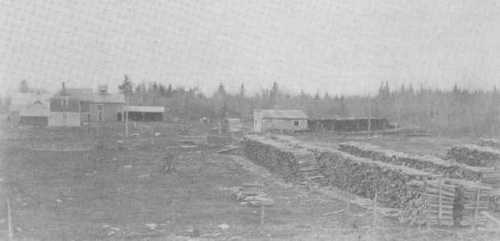
Greenfield Beach, 1909
Courtesy of Elna Jellum
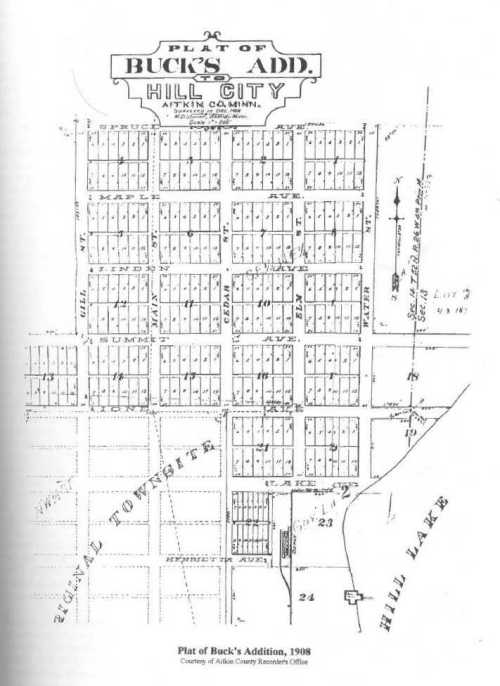
Plat of Buck’s Addition, 1908
Courtesy of Aitkin County Recorder’s Office
The Itasca-Aitkin County line was just north of the northern shores of Hill Lake. J. Everson Greenfield had land holdings on both sides of the county line and along the north end of Hill Lake. He was a real estate holder and was promoting the sale of his various holdings in the early years of the century. He had a program where he was selling five acre lots along Hill Lake as well as other tracks throughout his holdings. Greenfield had high hopes for his land holdings on the north end of Hill Lake. Having once been the site of an Indian village and an old trading post, Greenfield set up a farm and established a boarding house where weary travelers could stop and spend the night. Meals were served here and surveyors and loggers made use of his facility. "Greenfield Beach, at the north end of Hill Lake, is rapidly coming to the front. The development work at that point is assuming large proportions and is indicative of the spirit of progressive spirit of the inhabitants.
"Last winter William McLaughlin of Steel County took the old sawmill at Greenfield Beach and fitted it up for a shingle mill which has a capacity of 20,000 shingles a day. The mill has had a steady run and has cut in the neighborhood of two million shingles. Without boasting we can say that the shingles sawed by McLaughlin's mill compare very favorably with those cut in any of the big mills. The largest order was for William Virtue, being for half a million shingles....
"J. Emerson Greenfield is now having a dock 16 feet wide and 60 feet long built at the beach. It will be arranged to accommodate teams and wagons and is designed to promote the commercial interests between the 'Beach' and Hill City. We expect to see a great deal of cordwood, shingles and other products come down from the head of the lake this year. A great deal of brick, lime and cement is now being hauled to the Beach for contemplated improvements to be made during the summer.
"Among the other improvements is the clearing of land. Some 70 acres will be put under cultivation this year. J. E. Cory is clearing 20 acres, Geo. A. Hankerson will clear 10 acres, Jeff Leibold, 5 acres, C. A. Dutton, 5 acres, while C. A. Olson, L. M. Lathrop and others will add to their cleared land.
"The citizens of Greenfield Beach will build a telephone line into Hill City to connect with the local exchange, thus affording themselves the convenience of both the local and long distance telephone lines. (Hill City News ~ April 18, 1912)
The commerce was substantial for a few years. "The Beach Towing and Wrecking Company of recent organization did a most prosperous and flourishing business on the whole Sunday. Although for a number of years there has been launches of every description upon the lake and incidents have occurred which clamored loudly for such an organization, but not until recently has such a public service body been formed.
"This substantial and iron-bound company is going to co-operate with the National Woodenware factory, the new potato warehouse and the Muskeg Limited (Rabey Line) to build forth, establish and promote the general welfare of this flourishing little city along the hill. The Beach company at its home at the head of the lake has several ice boats already under construction for winter use with which they intend to rush potatoes across the lake to the warehouse before they freeze. (They will haul) logs to the factory so there need be no closing down and passengers will be landed at the bridge for the Muskeg Limited (Rabey Line). (Hill City News ~ July 23, 1914)
A school was established on the Itasca County side for the area's children. "The teacher and pupils of the Greenfield School will give a Christmas entertainment and a Christmas tree on Thursday evening of the week at the school house." (Hill City News ~ December 18, 1913) A ball team was organized at Greenfield Beach as well. "The Greenfield Beach ball team will come into town Sunday and open the season on the local grounds. The Beacherites pin their faith on their pitcher, Brown. When our leather pounders get through with them, he will be brown." (Hill City News ~ April 18, 1912)
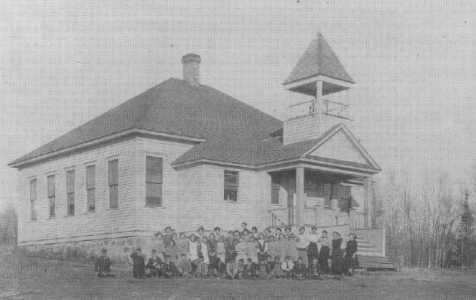
The Second Hill City School, 1905
Courtesy of Earl and Marianne Lipscy
In 1906, a creamery was built on the west side of town near the current Hill City School. "Hill City is to have a creamery at once. Messrs. Theodore Arens and J. J. Martin from Scott County of this state will be the proprietors of this new industry at Hill City. Their establishment of a creamery at Hill City means much for that section of the country as every farmer who keeps a few cows will derive support from them while he is getting his land under cultivation." (Grand Rapids Magnet ~ May 24, 1905)
The machinery for the creamery was unloaded at the depot in Grand Rapids and hauled to Hill City over the poor roads of that time. (Itasca County Independent ~ March 17, 1906)
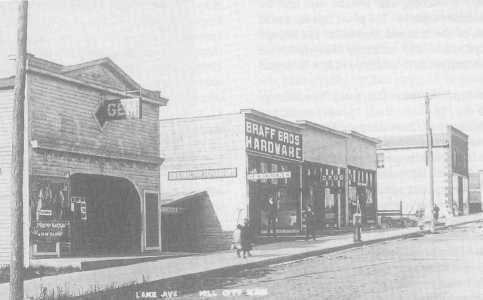
Lake Avenue in Hill City
Courtesy of Jim Raich
The village was growing rapidly and soon there were a variety of stores and homes. "Main street, if extended far enough, had its terminus in Hill Lake north and south of town. Lake Avenue crossed it at an elevation that presented a picturesque view across the water to a point of land at the beginning of Tom Gallea's bay. A block east on the north side of the avenue at the corner of Cedar Street was Lake View Inn, owned by George Anderson. While main street had the bank, the Smith & Taylor store, Gunderson's Jewelry, the telephone building and post office facing it on the west side, Lake Avenue from its intersection with Main had a variety of business places on both sides for a block or more, and sloped down past the depot and the end of the railroad tracks. The truly uptown section of Hill city was along Lake Avenue. Across from the Gem Theater was the Inn, and opposite it on Cedar Street was Lawrence Taylor's garage. South of the garage was the Commercial Hotel, with the warehouses down the hill at the siding by the rail line. West of the Inn was Stengel's barber shop, with Alex Lemore's lunchroom next door. Further west was a two story building with two apartments upstairs over an ice cream parlor and a clothing store. The parlor was originally operated by Plockerman. The clothing store was managed by George Richard.
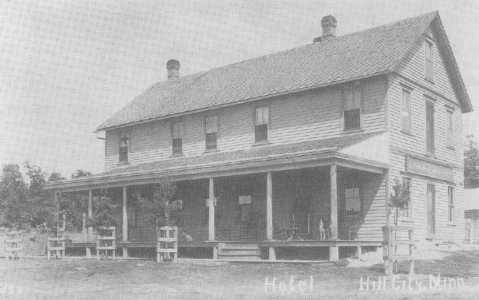
The Lakeview Inn
Courtesy of Jim Raich
"Next up the avenue was George Hankerson's grocery at the corner and across Main was the land office. On the southeast corner at the intersection was the hardware store of Charlie Kaiser. By it was a two-story house on the east, later replaced by Roy B. Smart's merchandise business, then the Koplin Block, with three of the four parts of the structure completed, the one on the west side uncompleted, was railed off along the walk to protect the pedestrian against a fall over the cement wall to the depth of the excavation. The basement of the building at one time contained the print shop of Gay C. Huntley, the furniture enterprise of Judge Fowler and the storage facilities of Braff Brothers Hardware. Above were the hardware store, Shoen's drugstore and Maki's meat market.
"From Elm to Gill Street on Henrietta Avenue were additional hotels and several barber shops with pool rooms. Thomas Swanson had a hardware and variety store at the corner of Stoner Avenue and Gill Street for a few years: and Noble's Livery Stable was one of the fixtures of Main Street at Henrietta Avenue. (Rumpus by Bill Sea, page 87)
An effort was made in 1908 to get support for the idea of detaching the northern tier of townships in Aitkin County and adding them to Itasca County. "There is a good chance we think for Itasca County to annex some valuable territory which rightfully belongs to it. A number of people of Hill City and vicinity deplore the fact that they are a part of Aitkin County and are very anxious to become a part of Itasca County. 'Hill City really belongs to this county', said a prominent Hill City man the other day. 'Our County seat is almost inaccessible, and even if there were roads down there, Grand Rapids is our point and here is where we want to come to transact our business.' I think that the people of Grand Rapids should interest themselves in this matter. There is also another matter which the people of Grand Rapids might lend us a hand at, and that is in getting a bridge at the Pokegama ferry."(Itasca County Independent ~ April 30, 1908)
The J. M. Wood Manufacturing Company purchased the Hill city Lumber Mill from E. M. Parker which was on the verge of bankruptcy. The plan was to establish a pail and tub factory. Pilings were driven for the foundation and one million feet of lumber was used in the initial construction of the pail factory.(History of Hill Lake by Paul Bauer)
The First State Bank of Hill City was formed in 1910. The stockholders at that time were: Thos. and M. Brusegaard, R. L. Abrahamson and Jens Johnson. (Stockholder list of the Hill City State Bank, Aitkin County Recorder's office) Brusegaard was also active in the new Lakeside Lumber Company. "Everything doing these days seems to indicate that Hill City has struck her gate and is on the way to becoming one of the most important business points in northern Minnesota. Having faith to these indications and believing that the surrounding country will quickly develop, the organizers and incorporators of the Lakeside Lumber Co. are building a large and complete plant for handling lumber and building material. The officers, stockholders and directors of the corporation are: J. O. Melham, president; Thos. B. Brusegaard, Vice-President; and Theo. B. Brusegaard, Secy. and manager....The company has already sold and delivered material for a number of buildings and additions which are now going up. Among the many builders are, Fitzpatrick and Plockelman, C. Parker, Olaf Jellum, Ed Romine, G. A. Belknap, Ed Rassier, C. E. Williams, J. E. Foix, J. L. Diven, A. R. Siddon, E. E. Rabey, B. B. Johnson and J. E. Greenfield who is building at Greenfield Beach. The company handles a complete stock of lumber, lath, shingles, sash and doors, moldings, lime, plaster, brick, cement, building paper, roofing, in fact everything in the building line." (Hill City News ~ May 5, 1910)
On April 29, 1909 the Hill City Methodist Church was organized. The membership decided to build a church building. "The bids for building the new Methodist Episcopal Church were opened Monday evening....Ed Rassier's bid being the lowest he was awarded the contract....Hill City is now assured of a neat and attractive place of worship, not large and imposing, but one that will be an ornament to our village." (Hill City News ~ August 10, 1911) They dedicated their first church building on September 8, 1912. (Memoir of Della Gallea ~ August 14, 1996)
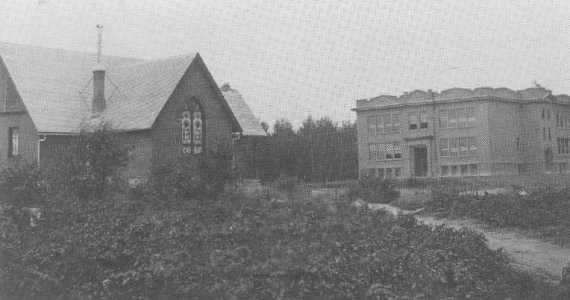
Hill City Methodist Church and School, 1914
Courtesy of Walter Schularick
Alex Stewart came to Hill City about 1910 and was the town's doctor until December of 1916 when Dr. George Frazer took over. Stewart went back to medical school in New Orleans and took up his practice elsewhere. (Hill City News ~ September 26, 1918) For a time a Doctor Tiege served the community. (Memoir of Sue Rassier Lowe ~ September 23, 1996) Dr. F. L. Skocdopole would serve the residents of Hill City every Wednesday afternoon at an office set up for him at the Commercial Hotel. (Hill City News ~ March 8, 1928)
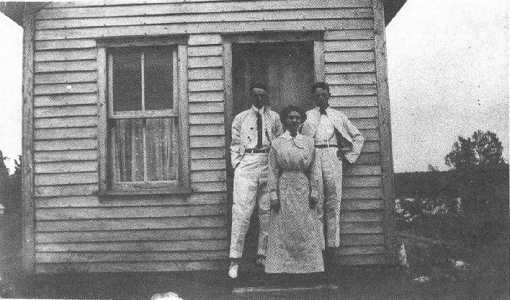
The Clinic Building of Dr. Stewart
Courtesy Katherine Berkeland
On May 5, 1910, Gay C. Huntley rolled off on a hand press the first issue of the Hill City New, the local paper. His first shop was in the Sprout Land Office. The following year, after the Kopplin Block was built, the print shop was moved to a basement room of the building. All of Huntley's equipment was run by hand power until 1915 when Make's Meat Market was started and Huntley used the gasoline power from the meat grinder above him to turn the press. By 1917, Huntley purchased the Sprout building and moved it to another location on main street. He tried to sell the paper to a number of men over the years. First Frank Raff tried to buy it in 1924. Later that year, L. L. Arnold tried his hand at it. John O. Lafrenier (in 1925) and also Clinton Pierce (in 1926) had a go of it. In 1927, Harold Walker made a run of it until 1935. By 1936, Gay Huntley was back at the paper. Huntley's type was set by hand until 1935 when he purchased a linograph. He ran "The News" until 1956 when it finally shut down for good. (Hill City News ~ various issues, 1924-56)
Fire protection became an issue for the town, and so a volunteer fire department was organized on May 27, 1910. Charles F. Kaiser was elected fire chief and George Hankerson was the assistant chief. (Hill City Village minutes dated May 27, 1916) On September 25, 1911 a special bond referendum election was held in regard to building a water tower, well and water system for Hill City. The referendum passed and the village borrowed $15,000 for the effort. (Village of Hill City minutes) In 1912, the new water tower was built. (History of Hill Lake by Paul Bauer)
With the railroad providing the needed industrial transportation, the people of the Hill Lake area looked for a means to transport the local wagon traffic across Hill Lake. "At a meeting of the town board of Hill Lake Township last Saturday a contract for building a wagon bridge across Hill Lake was let. The contract for the material went to George W. Belknap for $772.00 and the contract for the work of building the bridge went to William Plockelman for $210.00. The bridge will be 16 feet wide and 332 feet long and is to be finished by April first (1911). The settlement of all the land on the east side of Hill Lake is made possible by this bridge." (Hill City News ~ February 3,1921)
Fishing became a favorite pastime on the wagon bridge over Hill Lake. "When the wagon-road bridge was finished in 1911, it became the center of recreation for all the fishermen of the village. Hundreds of crappies were sometimes seen under it; and when they were biting, everybody landed fish." (Rumpus by Billy Sea, page 93)
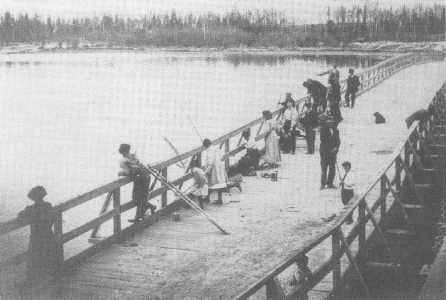
Fishing Off the Wagon Bridge Was a Favorite Pasttime
Courtesy of Bill and Esther Lange
Pleasure boating was another great pastime. "Hill City is to have a fine new pleasure dock or pier. It will be 150 feet long by 16 feet wide, covered and with seats along each side. The pier is being built by popular subscriptions and the larger the amount raised the better will be the result....The project is in the charge of Chas. F. Kaiser." (Hill City News ~ January 1, 1911)
The town kept growing and soon entertainment became an issue. While Fourth of July festivities were held each year as well as baseball games, the public wanted more. "....Bert Lange advanced a new idea in the town by using electricity to light a tent for a motion-picture show in summer months...From the tent, the theater was moved into the building east of Kaiser's Hardware, the old Woodruff place. While reels were being changed, music was furnished a few times by Elizabeth at the piano. Charlie helped out now and then when the two sang popular songs to cover up the silence of the intermission. The show business went from there to a building with a store front next to Wandel's, later the Bartle Opera House. The show house was also used for a roller-skating rink on special nights.
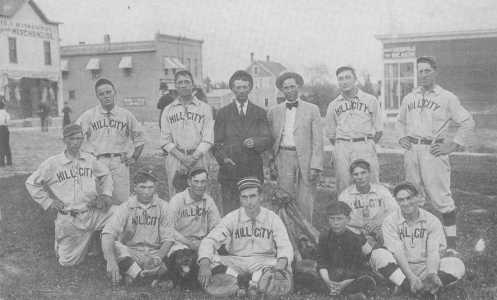
The Hill City Baseball Team Kept the Townfolk Entertained Over the Years
Courtesy of Earl and Marianne Lipscy
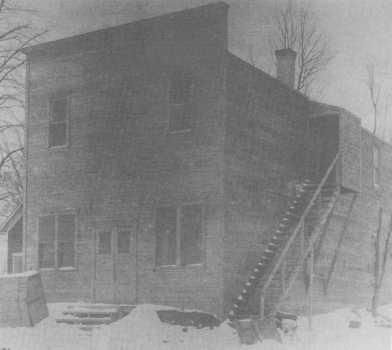
The Bartle Opera House
Courtesy of Bill and Esther Lange
"After Charlie Pierce arrived, another building went up in the business section of Lake Avenue, the Gem Theater...'Smokers' became an institution, with boxing, wrestling and stunts for men only...Serial pictures claimed a prominent place on the scheduled presentations one night each week for months. A few of the continued shows were 'Diamond from the Sky', 'Adventures of Kathleen', and 'Trey o' Hearts'. (Rumpus by Billy Sea, page 97 and 102)
Many good times were held at the Bartel Opera House. "They are humorous illustrative educative and entertaining. Mr. A. Lange has spared no expense to give Hill City a clean cut moving picture show, one that one and all can go to. His machines are now working in first class shape and is giving shows equal to shows of its class, given in the large cities. Films are gotten direct from Superior being in the Superior circuit for the best of pictures. There will be 3,000 feet and illustrated songs given at each show, at the small admission fee of 10 and 15 cents. One and all can well afford to see each change of program, which will be twice a week. Anyone wishing to take part in singing any illustrated songs, or any one or more who wish to take part on a clean cut vaudeville, or home talent number, may do so, by arranging with A. Lange. Amateur night is every Thursday." (Hill City News ~ January 5, 1911)
Mr. Abrahamson then bought the movie theater in town. He made some important improvements to the theater. "The Gem theater was closed the last of the week and until Tuesday of this week when the new machine was installed. The closing was caused by the breaking of the old projecting machine. A new power 6-A was at once ordered and it was to have been here Monday but failed to make connections and was a day late in arriving. By strenuous work the machine was ready for business Tuesday evening when a double bill was shown to a record breaking audience. The new machine is one of the best made, projecting a picture in a manner that is pleasing to the audience. The picture is thrown on the screen clearly and distinctly and without the flickering that was the bad feature of the old machine. Manager A. C. Abrahamson has known that a new machine would be necessary before long but the cost of the change made him hesitate, and he was rather glad when the breaking of the old machine forced the issue. It is needless to state that the patrons of the theater are well pleased with the change. With the class of pictures being shown and the new machine the Gem Theater will enjoy a patronage that will repay the efforts to please." (Hill City News ~ October 21,1915)
While the pail factory was operating, Abrahamson used to fill the theater. Silent movies were played with girls who would play the piano during the intermission. Plays and orations would also take place at the theater. Abrahamson sold out to Bill Dale who ran it until 1930, when he went out of business. (Memoir of Don Kaiser ~ November 4, 1996)
Baseball was another important recreation event for the town. A number of the players were recruited by the Armor Company. They would pick up players who were past their prime as major league players in Chicago and offer them a job at the Hill City Pail Factory. Other teams used to marvel at how good the Hill City team was. (Memoir of Bert Lathrop ~ August 7, 1996) Over the years, a number of men played for Hill City. Just a small sampling of names that come to mind are: L.L. Taylor, Joe Knapp, Lindsey Christensen, Fordis Averill, Glen Saylor Jr., Elson Averill, and Chuck Schoen. When the Hill City Pail Factory closed, Hill City lost a number of its ball players.
Joe Sailer was the town's barber, and he also ran a pool hall. Joe bought Frederick's Furniture Store which he used for bowling and dances. For a while he even used it as a heated garage for people who came to town for dances and other functions. Joe loved baseball, and he played for many years on the local team. After that, he umpired and coached for the area teams until his death took away this great sportsman. (The Hill City Saga- -July 4, 1955)
Some businesses came and went in the early years. "Chas. F. Kaiser has sold his hardware stock and fixtures to the Wm. Gausewitz Hardware Co....Realizing that the field would not support two hardware stores, Mr. Kaiser decided to quit and the sale was accordingly made.....The Wm. Gausewitz Hardware Co., while a comparatively new firm coming here last spring when they purchased Smith & Taylor's hardware stock, are so well known as to need no introduction to the public. (Hill City News ~ August 24, 1911)
A need for better communications became apparent. The Hill City Telephone Company was subsequently formed in December of 1911. "The village council on Tuesday evening passed an ordinance granting a franchise to B. E. Wideman of Pine River to install and operate a telephone system in Hill City. (Hill City News ~ December 7, 1911) They wasted no time in building the new system. "B. E. Wideman and his crew are busy setting telephone poles and getting ready to string the wires. The work on the central office is well underway. It is to be built of concrete blocks. E. J. Fennelly has the contract. Mr. Wideman assures us that Hill City is to have the best equipped telephone that it is possible to get, far better than is usually found in villages of this size." (Hill City News ~ April 18, 1912)
On November 1, 1913, Wideman sold out the business to M. L. Smith who was also the general manager. (Hill City News ~ December 14, 1914) Smith ran a number of rural lines out into the countryside in 1914 in an effort to expand the business of the company. "During the summer of 1914 many rural lines were built out from Hill City, and two lines into Grand Rapids from Harris township, adding 19 more to the number privileged with telephone service. Connections also were made with the Mississippi, Hill City and Western lines to give service to Washburn, Rabey and Mississippi Landing. The company now owns its own concrete block building. It has a cable line through the main part of the village and in the last sixteen months has increased its subscribers fro 56 to 99. During the coming year many improvements are contemplated, one of them a toll line from Hill City to the south further into Aitkin County, and another improvement is the addition of several rural lines. (Grand Rapids Herald Review ~ March 17, 1915)
Smith sold out his holdings in the company in March of 1921 to A. D. Hale of Spring Valley. (Hill City News ~ March 3, 1921) Mr. Oscar F. Blood then purchased the company in April of 1926 (Hill City News ~ March 11, 1926) and was the owner until 1928. He sold out to Frank Hale who ran it from 1928-30. In 1930 Hale was able to add to the size of his exchange with the merger of several nearby systems. "Negotiations were completed this week whereby consolidation of the telephone exchanges at McGregor, Palisade, Swatara and Hill City was accomplished. The Palisade and Swatara exchanges have been operated by a farmer's company as a cooperative organization for the past years of its existence. Manager Johnson of McGregor and A. D. Hale of the Hill City Telephone Co. with G. A. Sandberg now have purchased the farmer's lines to join with their own plants." (Hill City News ~ March 27, 1930)
In 1932, Frank Dichtel bought the telephone company. "Further improvements of the Hill City Telephone Co. lines are being installed by manager Frank Dichtel. A new switchboard is being installed at the Dichtel home, across the street from the present office with new cables laid underground in all directions from the new exchange. This will take all cables from Lake Avenue and move most of the others from sight." (Hill City News ~ August 4 and October 13, 1932) Dichtel ran the company for many years, eventually turning it over to his son- in-law, Ron Christensen. (Memoir of Don Kaiser ~ November 4, 1996)
The village got its water works put in during the year 1912. "In this issue of The News there appears notice asking for bids on the construction of a complete city water works system. Separate contracts will be awarded for the erection of a tower and tank, for installation of an engine and pump, for digging a well, for the erection of the engine house, foundations for the tank, etc., for furnishing pipe and fittings, and for trenching six blocks or more. The main purpose of putting in the water system is for fire protection, but service will also be available for domestic purposes. The plans call for mains along six blocks of the business district of the village with as many hydrants. With sufficient hose the entire village can be covered so as to take care of any fires that may occur. (Hill City News ~ February 22, 1912)
A robbery attempt was made that year. "An attempt was made to rob the First State Bank Monday night, but the would-be imitators of Jesse James either failed to locate any valuables or were frightened away by someone passing. Search had evidently been made in the desks as some of the drawers were left pulled out but nothing was missing. The thieves gained admittance by means of a rear window." (Hill City News ~ March 21, 1912
The year 1912 also saw Thos. Brusegaard make a run for the legislature. His message and platform appeared in an issue of the Aitkin Republican. "Mr. Brusegaard is fighting for a fair and square deal for northern Minnesota and has no selfish nor personal interests to foster. He stands pledged, if nominated and elected, to find out, by legislative investigation if necessary, to whose interest the sale of foreign bonds now held by the state of Minnesota would be detrimental. The money now invested in those bonds is needed badly for the development of northern Minnesota in general and the 52nd district in particular, and if they are not put on the market the citizens of Minnesota have the right to demand a good and valid reason." (Aitkin Republican ~ September 12, 1912) Brusegaard put up a good fight but lost the election to C. H. Warner of Aitkin.
By 1912, a third school was built of brick construction at a cost of $40,000.00. (Hill City News ~ August 17, 1911) The new brick school in Hill City was a building that the community looked at with pride. A local newspaper account of the structure went something like this: "This is a classy two-story and basement building, built of Twin City pressed brick, size 80 X 80, steam heated, mechanically ventilated, cement basement, maple floors, finished throughout in natural birch, slate blackboards, large cloakrooms, wide halls, sanitary drinking fountains, sewerage and water systems. There are six grade rooms, covering 690 square feet of floor space, height of ceilings 12 feet. Assembly hall has 2,114 square feet, manual training department is in the basement, domestic science on the first floor. All grades are taught, including the high school course. School library and office are on the second floor. The school attendance is 150, while the corps of teachers is six, all normal school graduates. The school property contains 10 acres, two of which are cleared for school gardens, which are cultivated by the pupils, and two more acres will be cleared for the purpose, making four in all. There is a natural school park of four acres, which with the campus comprises the 10 acres. The Hill city school system is presided over by H. W. Getchell, principal who came here in September, 1911. He is a graduate of St. Cloud normal, class (of) 1898." (Hill City News ~ September 13, 1913) A major addition was placed on the school in 1939. (Hill City News ~ November 16, 1939) The last and current school came in 1983. (Memoir of Bill and Esther Lange ~ August 1, 1996
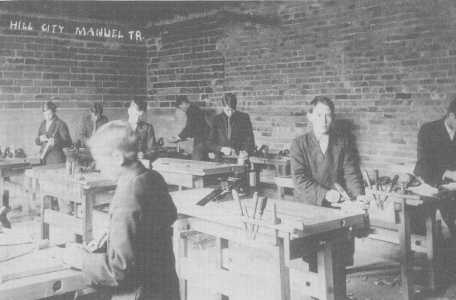
The Hill City School’s Manual Training Room
Courtesy of Bill and Esther Lange
In 1914, the drug store started by Gausewitz and Stewart was sold to William A. Schoen, who operated it for a number of years. (Hill City News ~ January 22, 1914) A potato warehouse was also set up that year. "William Dennerly is building a potato warehouse on Henrietta Avenue, and on the railroad. This building will be 22 by 30 feet and will be built of concrete. It is Mr. Dennerly's purpose to be in shape to handle the potatoes this year and in case the business is good he will increase the size of the warehouse as the needs demand. He will buy all kinds of root crops besides the potatoes and will also use the building as a general warehouse for his store. This warehouse is needed and fills a long felt want. It will be of great assistance to the farmers." (Hill City News- -July 16, 1914)
A much needed business to the community was improved in 1915. "Ed Foley on Wednesday started cutting ice for his supply for the coming season and will be in shape to take care of the trade in that line. An ice house will be built to stand just north of the place formerly occupied by the old ice house and the construction of it will commence soon. The ice business in Hill City at first an experiment, has steadily increased each year until now there promises to be a nice profit in it. That the trade will continue to increase each year is certain and handled in the right way cannot fail to be a lucrative business. Hill Lake ice is fine and clear and is about two feet in thickness. Right now is the best time to put it up and Mr. Foley realizing this, will push the work right along." (Hill City News ~ January 28, 1915) Foley was not the only one in the ice business. "Ice harvest on Hill Lake commenced Monday of this week. For a time a number of men will be kept busy getting out the chunks of hard water. The Lakeside Garage will also handle ice as a sideline. The company built a large ice house at the foot of Lake Avenue. They have cleared off a field of ice and are now busy putting it up. Their ice house is 30 X 70 feet and they say they will have ice enough to supply all the needs of the village....It looks as though there would be no ice famine in Hill City this coming summer. (Hill City News ~ January 20, 1916)
A Masonic Lodge was formed in 1915. "On Thursday Hill City Lodge, Nol 283, A. F. & A. M. was constituted by past grand master W. B. Patton of Duluth....Election of officers was held in the afternoon and resulted as follows: Gau C. Huntley, Worshipful Master, J. L. Diven, Senior Warden; R. L. Abrahamson, Treasurer....Following the election a most delightful banquet was served by the Methodist Ladies Aid in the basement of the church. The tables were most prettily decorated and the service of the banquet was excellent. It was undoubtedly the best thing of the kind ever served in Hill City and great credit is due the ladies for their work in getting it up." (Hill City News ~ February 25, 1915)
On Wednesday evening of last week the Commercial Club Held a meeting in Fowler's Club Rooms and some important developments are expected as a result. Probably the most important subject taken up was that of observing Good Roads Day. It was decided that the club should request Mayor Brusegaard to issue a proclamation regarding the observance of a Good Roads Day and that the purpose be the graveling of Brusegaard Boulevard, which is that portion of the north and south state trunk road lying inside the village....It has been in a rather bad condition all the spring on account of its being in the woods and not having a chance to dry out quickly...A committee was appointed to make repairs to the wharf at the foot of Lake Avenue, it being in a dangerous condition. (Hill City News ~ May 6, 1915)
In February of 1915 the railroad suffered financially due to a fire. "A passenger coach near the depot was destroyed by fire at one o'clock Wednesday morning. It was evidently caused by the overheating of the stove in the car. The loss is estimated at $2,500.00. Shortly before one o'clock an alarm was turned in and the fire department was on the job in a short time and rendered good service, but the dry wood and light upholstering of the car burned like kindling and the fire had gotten a big start before it was discovered. The upper part and the inside of the car were practically all destroyed and a box car standing on the track alongside the coach was damaged. The loss of the coach is a serious one to the railroad. It had recently been repainted and fixed up at a considerable cost and the loss of it will make a big hole in the earnings of a road that barely pays expenses at best." (Hill City News ~ February 11, 1915)
The railroad was losing money and was finally forced to be sold by its creditors. On October 26, 1915, the sale took place on the steps of the capitol building as required by law. The railroad was sold to the Armor interests of Chicago. They bought the road for $200,000.00 and were the only bidders. "The road was sold under order of the court as a foreclosure proceeding. Asa G. Briggs of St. Paul conducted the sale as special master. The road will be turned over to a new corporation, The Hill City Railway Company. Stiles W. Burr of St. Paul is president. Walter A. Eggleston of Minneapolis is trustee under the foreclosure proceedings." (Hill City News ~ October 28, 1915)
Despite the railroad's problems, the Woodenware Factory seemed to be doing well and in fact was expanded in 1915. "Plans for an additional warehouse and an addition to the dry kiln at the National Woodenware factory have been approved and construction will start at once. The warehouse, which will be just south of the tub mill, will be 75 X 80 feet in size. The dry kiln will be enlarged about 25 per cent. Each track in the kiln now holds 15 cars and it is planned to increase the capacity to either 19 or 20 cars. At least one and perhaps two more lathes will be added to the equipment of the tub mill, which will mean an increase of the working force." (Grand Rapids Herald Review ~ September 29, 1915)
This was also the year when Hill City officially became a 'dry' town. "No more will the baggage coach on the Mississippi, Hill City and Western Railway disgorge sundry kegs and cases bearing the brand of a brewing company, and those neat looking boxes on which no name gives out a hint of the freight therein contained. On Monday, general manager Hinkle received a courteously worded letter from the Indian department setting forth the fact that Hill City is in the district covered by the treaty of 1855 and that it is unlawful to accept shipments of booze into this country. This action had been expected for some time and it means that those who felt that they must have their booze must sneak it in under cover of darkness. It will be done more or less but those are liable to be called to account by Uncle Sam's officials. They have a mean habit of confiscating the auto or other rig used in conveying the liquor besides a fine or jail sentence. Better go a little slow in this business. (Grand Rapids Herald Review ~ October 6, 1915)
Crime was a bit of a problem that year. "Two places were entered by burglars at an early hour Saturday morning. Braff Brothers hardware store was robbed of $19.00 in cash and revolvers and other small things. The same gang entered the depot of the Mississippi, Hill City & Western but it is not known how much money was taken. Last Sunday while the ball game was in session, Joe Sailer's barber shop was robbed of $92.00. (Grand Rapids Herald Review ~ June 9, 1915)
The Woodenware Factory was interested in putting in a power plant, and as such, the village was contacted as to whether they might be interested in purchasing power for the businesses and homes there. This was looked on favorably by the townsfolks and so a local power distribution company was set up. "A plan for the formation of a stock company for the purpose of furnishing electric light and power to Hill City people is now underway and it looks as though it would go through. The thing is being undertaken by local men who not only are looking for an investment that will pay them but are also interested in the development of the community...There is little doubt that the majority of our citizens favor the installation of electric lights and will become patrons of the company....The plan is to arrange with the National Woodenware Co. for the delivery of electric current at a switchboard and this in turn will be distributed to patrons as cheaply as possible. The larger the amount of business the cheaper this can be done. Capital with which to finance the project will be ready as soon as it is apparent that our people want the lights. It is estimated that a house can be lighted by electricity for very little above the cost of oil lamps and at the same time we have the best kind of light for all purposes, that is clean, always ready for use and positively safe from explosion." (Hill City News ~ October 21, 1915) By April of 1916, the Hill City Utilities Company was formed. (Hill City News ~ April 20, 1916)
And so with great interest the people of Hill City watched the construction of the power plant at the Woodenware Factory. "A crew of men are hard at work setting up the new engine and dynamo at the National Woodenware Factory that will furnish the electric current for the village. The concrete foundation was ready the first of the week and the setting up of the machines is progressing nicely. Some parts had to be reordered and these are coming by express so as to avoid unnecessary delay. If nothing unforeseen happens, the current will be ready for delivery for Christmas. The dynamo is a 12 k.v.a., a larger machine than specified so the company plans to use the excess current to run motors for use in different parts of the factory. This will permit overtime work by some parts without having to run all the machinery. The work of wiring and installing fixtures in residences and business places being all ready for turning on current." (Grand Rapids Herald Review ~ December 20, 1916) By 1917, the National Woodenware helped establish street lighting along Main Street and Lake.
The farmers of the area were doing well and so it was decided to hold a community fair to showcase their products and achievements. "looking back upon the first annual fair held by the Hill Lake District Fair and Institute Association for the Hill Lake District, the patrons, Judges, and management vote it a success....In a financial way, the fair met with favorable results. This was due to the open handed generosity of business men and farmers of the district in their subscriptions to the premium list fund. In spit of the fact that no entry fee was charged to exhibitors and that there was no gate admission there remains a surplus in the hands of the treasurer to carry on the preliminary work of the 1917 fair.
"Educationally, every word of the institute speakers was of value to the listeners. Friday morning the talks were on land clearing and farm building, by Mr. Bugbee; and on potatoes in the Hill Lake region, by Mr Bergh....In the afternoon Mr. Bugbee gave a splendid exposition of the origin and possibilities of farmer's clubs." (Hill City News ~ October 12, 1916) The Hill City chapter of the Farm Bureau was started in late 1918. (Hill City News ~ February 13, 1919)
The automobile had made its appearance in Hill City. Noble's livery equipped itself with one of the early-model Ford touring cars. It had shiny brass trimmings, gas headlights, and kerosene parking lamps....A Ford could be bought for $340.00 up to $390.00, and an Overland equipped with a thirty-five horsepower engine was priced at $750.00 at William Dennerly's, who had the agency for both kinds of automobiles....Bill Taylor received his seven-passenger Cadillac....(and)it wasn't long after Taylor's Cadillac arrived that L. M. Lathrop showed up with a Dodge, which he used as a livery between Hill City, Grand Rapids and the Soo Line....Then Doctor Alex Stewart acquired a Buick Roadster and was promptly arrested for speeding. The speed limit in town was ten miles per hour, and bicycles often doubled that. When his case was brought before the judge, it was dismissed. A doctor has to make hurried-up calls once in a while, doesn't he?" (Rumpus by Billy Sea, pages 136-138)

An Early Automobile in Hill City
Courtesy of Bill and Esther Lange
With the influx of cars, the garage business got its start. "E. S. Rabey and Lawrence Taylor this week started work on their garage that will stand on the northeast corner of Lake Avenue and Cedar Street. The building will be forty by eighty feet and constructed of concrete blocks, splash finish. There will be a cement floor and the building will be near fireproof as is possible to make it. It will be twelve feet high and the interior will be free from posts. Entrance to the garage will be on Cedar Street. The proprietors stated that a general garage business will be carried on. Repair work and livery besides which they will have the agency of at least two makes of cars. Cars will also be taken for storage. This garage will be up-to-date in every way and will be far ahead of the general run of garages in the smaller places. It is being built expressly for the business and in that way will be most conveniently arranged.
"A real estate office will occupy the corner of the building with entrance on Lake Avenue. This will be occupied by the Hill City Realty Company and the Farm Development Company and will be in charge of W. W. Rabey. This building will be a decided asset to Hill City and will probably mark the beginning of business houses of other than frame construction. The garage is needed and there is little doubt but that it will be a success. There are now 14 cars owned in Hill City where a year ago there was but one. During the next few years the increase will be phenomenal. As the roads are developed and the price of cars are reduced more people will own them and soon they will be as common here as they are in the older settled districts." (Hill City News ~ August 19, 1915) They also had an agency for the Dort car, and Joe Braff became salesman for the Maxwell Car. Taylor and Rabey ran their garage until the late forties.
A. L. McFeeters also ran an auto repair garage and a Ford car sales shop known as Mack' Garage. This was near the corner of Stoner Avenue and Gill Street. Art Wynkoop went into partnership with him and later bought him out. Mr. McFeeters then bought the service station on the corner next to the print shop. This station had been a post office and later a grocery store. It had also been the Pure Oil Station owned by Wendell Ingraham and Sid Rimmer. McFeeters also ran a bus service. "A. L. McFeeters met with an accident Tuesday morning while driving his bus to Swatara. He had reached the Perry swamp and while attempting to pass another car got too close to the edge of the road and tipped over. Fortunately, Mr. McFeeters escaped injury. One passenger had his shoulder hurt but not seriously. The bus was not damaged in any way." (Hill City News ~ October 26, 1922) Several years later McFeeters tore down the station and built one on Highway 169. He sold out to Mr. Wynkoop in 1933, and Stroms bought it in 1953. (The Hill City Saga ~ July 4, 1955)
The Catholic community in Hill City had their first masses said in the home of T. Arens, J. J. Healy, and Mrs. Ooulette by Father Terbeau. The first altar boy was Ted Arens. Later, masses were held in the one-room school and in the Masonic Hall. In June, 1916, ground was broken for a church that was completed in the spring of 1917. Edward Rassier had the charge of building the church. The parish bought a house in the late forties for a rectory. Some of the priests to serve the parish were Fathers L. Beuchler, Fr. M. J. Cummins, Fr. John Ahern, Fr. Hennebry, Fr. Patrick Corbett, Fr. Patrick Flynn, Fr. Doyle and others. (Memoir of Sue Rassier Lowe ~ September 23, 1996)
The year 1917 saw Hill City obtain a new bowling alley. "J. D. Wilde opened his bowling alley Saturday evening in the basement of the Kopplin Block and from the start has enjoyed a good run of business. Teams are being organized and there already have been a few matched games and they will be increased in number as time passes. There are two automatic ten pinnet alleys and these afford good healthy sport for the men and boys. Mr. Wilde also plans to have one or two ladies' days each week but has not yet completed his arrangements for them. They will undoubtedly make a hit with the ladies. (Hill City News ~ November 29, 1917)
The Hill City and Western Railroad suffered another loss in 1918. "Tuesday night at eight o'clock the roundhouse of the Hill City Railway caught fire and in a few minutes the entire building was a mass of flames. In a comparatively short time a line of hose was laid from the nearest hydrant, but it was then too late to save the building or machinery. All efforts were directed toward saving the fuel and supply warehouse. Estimated loss is from $10,000.00 to $12,000.00, partly covered by insurance. Practically all the machines and tools are a complete loss. Some may be put into shape for use again but most of them are a mass of junk.

The Hill City and Western Railroad Train Backing Into the Depot at Hill City, 1920
Courtesy of Bill and Esther Lange
"As nearly as can be ascertained the fire was caused by fire dropping from a kerosene torch. As the building was of frame construction and bone dry the flames spread quickly. The floor and benches were saturated with oil and grease, the accumulation of the past nine years, and this aided the fire in getting a quick start. There was a great quantity of cordwood piled around the building and about 600 tons of soft coal and this was on fire several times. A small amount of the fuel was burned but nearly all of it was saved.
"A flat car and a gasoline speeder were inside the shop and were lost. The two engines were run out to safety, although the coal on one of them was on fire. Most of the heavy machines are warped or cracked so as to render them useless. Tools, many of them specially made, that have been accumulating for years were practically all destroyed. Many of these expensive dies and taps and some of them it is next to impossible to replace. The building itself is the smallest part of the loss, being of wood and roughly constructed. It will probably be replaced by a brick or concrete building. To replace the machinery and tools will cost a great deal more than the loss and will take a long time owing to conditions throughout the country. It was by far the most expensive fire in the history of Hill City." (Hill City News ~ March 14, 1918)
Fortunately for the town, the railway decided to rebuild. "Plans for the new roundhouse of the Hill City Railway Company are completed and a building permit has been granted for it. The new building will be of brick construction and will be located on Highland Avenue between Main and Cedar Streets. Orders for laying the necessary track to reach the new location have been issued and this work will be done at once. It is expected that work on the roundhouse will be started within a short time." (Hill City News ~ May 9, 1918)
By 1918, the Woodenware Factory had consumed most of the wood immediately adjacent to Hill City. They were now forced into setting up camps some distance from the mill. "The National Woodenware Company is just finishing putting in a new camp at Seaver Lake, about two and a half miles southeast of town. A. C. McLean, who has charge of the work, stated that the camp will be one of the best in this section of the country." (Hill City News ~ November 28, 1918)
A few years later more camps were set up. "The Woodenware has finished logging operations at Brauer and work is being started on a new camp in section 6 south of Washburn." (Hill City News ~ April 15, 1920) By 1925, the company was forced to set up logging operations southeast of Mississippi Landing in Cornish Township. Ice roads were made from the landing to the camps, and steam haulers transported the wood to the landing whereupon the wood was loaded onto cars and hauled to Hill City. "The steam hauler which the National Woodenware Co. has purchased to be used in logging operations near Jacobson, will arrive sometime this week. This hauler is an ordinary steam driven machine with sled runners in the place of the front wheels and caterpillar tread as back wheels. This machine will haul from 35,000 to 50,000 feet of logs in one load, while a team of horses will haul only 3,000 feet in one load."(Hill City News ~ November 5, 1925)
In addition to the distance from the timber available, the Woodenware Factory was experiencing a number of costly fires. One such fire ran to the tune of $16,000.00. (Hill City News ~ August 11, 1921) Most of the fires were put out as soon as possible but the fires were problematic.
After the first World War, the James Kobernot Legion Post #340 was established at Hill City. The club had 28 charter members, and they met at Shapiro's Store until they built the Legion Hall in 1922. A ladies auxiliary was also formed. (Per notes written by Carl Boese ~ November 2, 1984)

The Legion Hall in Hill City
Courtesy of Bill and Esther Lange
The early years seemed a more laid-back era. Even in town some folks had milk cows to provide milk for their families. "It seemed that everyone had a cow or two in Hill City. Even though they were in town it wasn't a problem as the cows would go out each day and go across the wagon bridge to the east and pasture on the fields above town near where Mr. Fixmer now has his concrete plant. Then at the end of each day the cows would come home. They would all work their way into town and each cow would turn off at its respective house and be ready to be milked." (Memoir of Marie Washburn ~ October 30, 1996)
The Arens and Martin Creamery had gone out of business and so in 1919 a co-operative creamery was formed. "The farmers and business men of Hill City and vicinity have decided that the time is ripe for a new creamery there, and have started an active campaign to get the outfit in running order as soon as possible. There are many farmers in the territory immediately tributary to Hill City, and these men are enthusiastic about the new creamery. A large part of the stock is being purchased by local farmers, while the balance will be taken in the village of Hill City and along the Hill City Railway line. The institution will be co-operative, and will undoubtedly be successful from the start.
"A great deal of cream is produced along the Hill City railway line between Swan River and Hill City. The promoters of the creamery expect to get a great deal, if not all, of this cream for the new butter factory. It is estimated that $4,000.00 will finance the project, and it is proposed to run a steam laundry in connection with the creamery." (Aitkin Independent Age ~ April 15, 1919
The local farm bureau was now active in the community and continued its work on behalf of the farmers. "Acid phosphate fertilizer has just been received at the county agent's office to be distributed to the farmers cooperating in the peat soil investigations in Aitkin County during the coming year....The Farm Bureau has secured a quantity of sunflower seed to be given out to a few farmers having silos." (Hill City News ~ May 1, 1919)
Some new organizations began to appear in 1919. "The boy scouts movement in Hill City has been allowed to rather die out recently but it is now waking up again and indications are that we will have one of the finest troops in this part of the country by the end of the summer. An enthusiastic meeting was held Monday evening at which each boy present was appointed as a committee to secure other members and have them at the meeting at the school house next Monday evening at 7:30 when the troop will be re-registered." (Hill City News ~ June 12, 1919)
That year the Woodenware Factory began to experience some labor strife. The factory was hit with a strike in May of 1919 over wages. The strike ended when the management of the mill offered an increase of 28 cents per day for the men to return to work. (Hill City News ~ August 8 and 21, 1919) Another walkout came in 1920 because the Coopers International Union Local 27 President, O. C. Witherill, was let go. This strike lasted from March 25 until April 8 of 1920. The strike ended when Witherill was allowed to return to work. (Hill City News ~ March 12 and April 8, 1920)
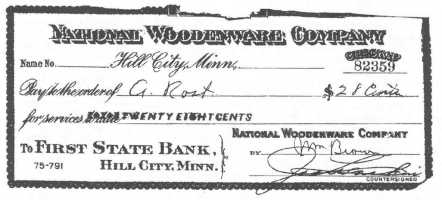
Woodenware Check
Courtesy of Norman and Patty Rost
There were a number of aspiring photographers in Hill City over the years. Olaf Jellum took a number of photos as well as a Mr. Joice. Perhaps the more famous photographer was Charlie Pilgrim. Charlie was a talented man and many of his photos capture the Hill City landscape. (Memoir of Paul Jellum–September 18, 1996)
Of course Hill City just had to have the ever popular town band. Members of the band were: Charles Kaiser, Harry and Joe Fischbach, A. B. Wandel, P. P. Scott, Charles Herrick, Dick Griebe, Bill Taylor, Harry Christensen, Joe Sailer, Elmer Arnold, Robert Abrahamson, and Wendel Ingraham. (The Hill City Saga ~ July 4, 1955)
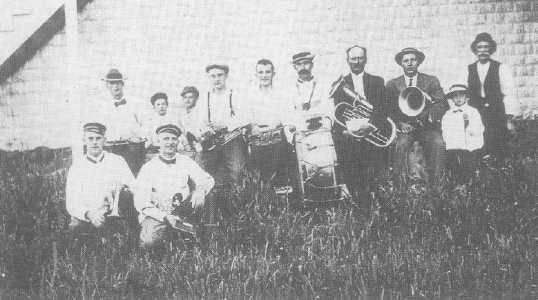
Hill City Town Band
Courtesy of Elna Jellum
Just as things appeared to be going well in Hill City, fire struck again. In March of 1920, a great fire completely destroyed the Kopplin building. The Gust Maki's lost all of their household goods as well as their meat market in the fire. "The most disastrous fire in the history of Hill City occurred early Monday morning when the Kopplin Block was entirely wiped out, the tenants who lived in the building barely escaping with their lives. The fire was first noticed by Daniel Tough, who heard the noise of it in the hall. Upon investigating it was found that the hallway was a mass of flames and Mr. Tough, his son Trueman with his wife and baby managed to make their escape through a window, but without being able to save a thing. This was in the front apartment in the basement. The rear apartment was occupied by Mr. and Mrs. David Bushaw and their two children. When awakened they were unable to get out through the hall and managed to escape by a window without being able to save their clothes. In the same way Mr. and Mrs. G. K. Maki, who lived in the rear of the meat market, were able to get out but had not time to take anything with them. In an incredible short time, the flames had spread over the whole building and though an alarm was promptly responded to it was impossible to save the building.
"Efforts of the fire department were confined mostly in keeping down the flames and preventing them from reaching the Gem Theater. In this they were successful and the Gem stands hardly scorched by the hot fire alongside of it. The snow of Sunday undoubtedly was a factor in saving other buildings as sparks and large pieces of fire were carried through the air by the wind for long distances.
"The Kopplin Block was occupied by G. K. Maki's meat market, the Schoen Pharmacy, and W. W. Day Jr.'s Hardware store on the first floor....In the basement under the drug store D. F. Williams had his hearse automobile and some furniture...The Kopplin Block was built in 1910 by Kopplin & Kopplin of Iron River and was owned by them until about five years ago when it was purchased by the Radford-Wright Co. of Duluth on foreclosure proceedings. It was built entirely of wood and the partitions were of light sheathing covered with deadening felt and paper. It was this fact that caused the flames to sweep through the building so quickly....While the value of the building is in doubt it is estimated that the fire caused a loss of about $30,000.00, partly covered by insurance.
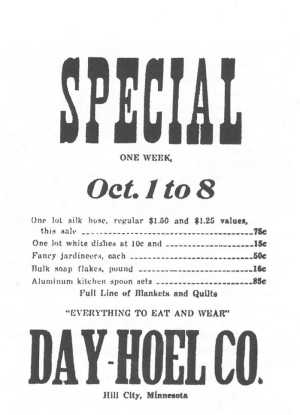
"This was the second fire in four days, the first being Friday morning at four o'clock when the Anderson Hotel barn, A. J. Stengel's garage and chicken house were burned. In this fire Claud Ames lost three good horses, A. J. Sengel his Ford car and about 60 chickens, besides tools, harness and other articles. It is estimated that the loss in this fire totaled about $2,000.00, no part of which was covered by insurance." (Hill City News ~ April 1, 1920)
The village was threatened in the fall of 1922 by wild forest fires as well. "Rain Friday night and Saturday put an end to the fire menace in the vicinity of Hill City. There had been fires south, west and east of Hill City for some time and last week the one on the west side came within six miles of town. Some of our citizens became nervous and left town....Several days last week volunteer fire fighters went out from town and did some great work in combating the flames. At one time upwards of 100 men were out from Hill City. Other times the number varied accordingly as the danger showed more or less. The biggest fight came at the fire west of town." (Hill City News ~ October 12, 1922)
A sad event occurred with the murder of Clifford Gallea. "Clifford Gallea, a farmer, 24, living near here, was murdered and thrown into the Hill River today by his hired man, John Perman, 40, who got a rifle from the house and shot himself immediately afterward. The men had quarreled before going to the woods to measure a pile of wood and Perman evidently had a pistol with him, with which Gallea was killed. Gallea had lived here many years and was well thought of. Perman had been here about ten years. The young farmer leaves a wife and two small children. It was an excited crowd that went out to search for the body of Gallea and had Perman been found alive his life would have been worth little." (Aitkin Independent Age ~ July 10, 1920)
The resort potential of Hill Lake was now being recognized. Robert Rabey established "Rabey's Camp" or the "Hill Lake Resort" near town in 1922. Rabey built up the resort and a few years later added three more cottages. "These cottages are modernly equipped and have everything that the tourist or camper could wish for. Electric lights will be installed this summer and every cottage is to have a row boat. Mr. Rabey also has a detachable motor that will be used out there this season on the boats.
"Fortunately, there is a spring of ice cold water at the location. Mr. Rabey has built a concrete tank and piped the spring so there is not only fine cold drinking water, but also a place in the concrete tank that serves as a refrigerator. Refreshments will be served in one of the cottages this year. We predict that this will be a place of great interest to many of the people of Hill City as the walk down the boulevard past the park is most beautiful, then to partake of Mrs. Rabey's famous cooking, and the walk back home....The cottages were used until very late last fall and many people from town enjoyed the convenience of them for week end parties." (Hill City News ~ May 8, 1924) Rabey sold his resort to George Kelly who ran it in the thirties. (History of Hill Lake by Paul Bauer)
Lew Berry had a campground, which was bought by Mr. Jobe. Charlie Kaiser bought the original farm of Mr. Buck, and Don Kaiser made it into a resort. He built three cabins down by the lake. Wally Nass started a small resort on the east side of the lake. There was also Krantz's Cedar Grove Resort near the present Tom Smith place. (History of Hill Lake by Paul Bauer) Charlie Tilden set up a beaver farm in Tilden's Bay on the east side of the lake. It was in 1921 that the village started to construct its park down by the lake. The city park volunteers were busy brushing out the park in the summer of 1921. (Hill City News ~ August 11, 1921)
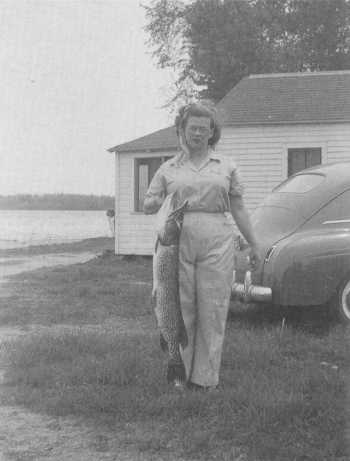
Kaiser’s Resort
Courtesy of Don Kaiser
On the east side of Hill Lake, there were a number of farmers who were known as the "East Side Community." Here was located the Mountain View or Lake View School. This school was first known as the Morgan School or the Berry School by some in the area.

The Morgan School Built on the East Side, 1914
Teacher was Gladys Weller
Courtesy of Bob Burt
That school had burned to the ground, and so a newer building was constructed. This school operated until 1921, when it was consolidated with the Hill City School.

East Side School House Known as the Mountain View School or Lake View School, 1919
Courtesy of Bill and Esther Lange
The community was close knit and held various functions for entertainment. "The crowd began to gather early on Tilden's picnic grounds and at 11 o'clock the following program was given. Song-America, Reading-Declaration of Independence by A. W. Weller, Reading-Ride of Jennie McNeal by Mrs. Wood, Song-The Jolly Students, by Hazel Morgan, Reading-Barbara Fritchie by Mrs. L. H. Smith....(then) dinner. This was a big feed such as the east siders know how to prepare. Next came sports. A tug of war with girls vs. boys won by the girls. Boy's race was won by Donald Tilden. The peanut race was won by Mae Myers and the button sewing contest won by J. Stone. Ethel Gallea won the girl's race. The nail driving contest was a tie between Mrs. Weller and Annabel Parsons. The sack race was won by Percy Morgan, the cracker eating contest won by P. Morgan, the potato race won by Martha Gildersleeve and the three legged race was won by Donald Tilden and Dan Morgan.
"Next the crowd tried to see who could eat the most ice cream but the judges were too busy eating to know so they called it a tie between Tom Gallea and Chas. Tilden. After this came the tub race. After many upsettings, four tubs started. The prize was given to Varla Tilden for keeping right side up and coming out dry. The fireworks finished the day's sports and all agreed we had a safe and sane celebration." (Hill City News ~ July 8, 1915)
In 1922, the local farmers of the East Side Community built a dance hall and community center just south of the Martin Meyer place. (Memoir of Earl Lipscy–October 23, 1996) "The (Farmers) club (of the east side) for some time has been planning on building a clubhouse and enough logs have been hauled to the grounds and sawed into lumber to make a good sized building. A piece of land has been leased to them for twenty-five years to build upon and they expect to have the building completed by July 1st. (Hill City News ~ April 6, 1922) The hall was used for various functions for the community. "The East Side Farmers Club held a basket social and dance at the club house Friday evening which was well attended and was considered a very successful affair from all points." (Hill City News ~ December 14, 1922) Another report from the local newspaper went like this: "When it comes to being alive the East Side Farmers Club can show most of us a few things. The latest stunt by the East Siders is an Old Settlers' picnic which is scheduled for Friday of this week. There will be athletic stunts and a farmers' institute during the day and a dance at the club house for the evening. Everyone is invited to bring their picnic lunch and enjoy the day. Coffee will be served by the club at 12:30." (Hill City News ~ August 16, 1922)
One resident recalls, "We used to go to the East Side Dance Hall where my husband played in the band. My mother didn't like me going there but my future husband said it would be all right as I could sit by him on the stage. At the hall Mrs. Bela would make the best lunches for the people. The hall did get a bit wild at time though." (Memoir of Margaret Martin ~ November 25, 1996) Another resident recalls, "I used to go to dances at the East Side Hall. It cost 25 cents to get in and 15 cents for lunch. For $1.00 you could get by pretty well for a night. I met my wife at a dance there." (Memoir of Don Kaiser ~ November 4, 1996)
The farmers paid off the mortgage for the hall in 1928. "Wives of members of the East Side Farmers Club have undertaken to clear the final payment on the hall. They sponsored a dance at the club house Saturday night, clearing half enough, as there was an unusually large crowd. The Palisade orchestra played. After supper a goose was raffled, Ersel Mothershed holding the lucky number." (Hill City News ~ November 29, 1928)
Quadna Township used to hold their meetings in the East Side Hall during the hall's existence. Quadna Township had started in 1907 and stayed organized until 1933. (Aitkin County Auditor's Records) The last recorded event at the East Side Hall occurred in November of 1936. "Mr. and Mrs. Cletus James were honored guests at a parcel shower Monday night at the East Side Hall. They received many useful and beautiful gifts." (Hill City News ~ November 12, 1936) The East Side Hall may have run a bit longer but then it fell into disuse and was torn down a few years later.
Forest fire protection came to the area in 1919 when the state set up a patrolling district around Hill City. In June of 1925, E. R. McFeeters was the first local man to patrol the area. J. C. Gannaway came in March of 1926. Gannaway started the state forestry office in town. In 1928, H. I. Johnson came to Hill City. Johnson was a tall thin man and so was popularly called "Hi" Johnson. Hi Johnson built the first log office building which still stands in town today. This station was built in 1932. Johnson was responsible for the first permanent steel fire tower which was placed on Quadna Mountain. (Memoir of Margaret Martin ~ November 25, 1996)
The old site of the railroad roundhouse was put to use in 1922. "A new factory is now under construction in the south end of town near the old roundhouse grounds. It is a branch of the Minnesota Cement Products Company of Aitkin and is under the management of Murphy and Teeters of that place. They are putting up a building 24 by 30 feet and expect to have it completed by next week. They will start operations at once. The company manufactures different cement products such as tiling, cement culverts, concrete silos, etc. This will be another boost to the Hill Lake region as it adds one more industry and will make more employment." (Hill City News ~ June 1, 1922)
The twenties were known as the era of prohibition. Some 'moonshining' took place in the Hill City area as well. "Being awakened in the early morning hours Monday by hearing a noise at her back door and the crash of a broken window pane a Hill City lady sprang from her bed and found herself facing an intruder who was trying to get the door open. She soon recognized the young man and tried to induce him to leave but without avail. She was terribly frightened and ran to a neighbor's for help and soon the intruder, who was loaded with 'moon' was induced to go home to bed. This resulted in the young man facing a charge of disorderly conduct before Judge Hall and paying a fine of $10.00." (Hill City News ~ July 13, 1922)
Controversy ruled supreme in Hill City in January of 1924 when Peter Poliski was shot dead by a local game warden, D. C. Williams. "Peter Poliski of Hill City, was instantly killed at 11:30 a.m. Wednesday on one of the main streets of that village, by a bullet from the gun in the hands of D. C. Williams, Aitkin County coroner. The shooting and subsequent death of Mr. Poliski, was accidental, according to the verdict of a coroner's jury, called by William Durose, deputy coroner, who acted in Mr. Williams' place. The jury was composed of the fellow townsmen of Mr. Williams' and Mr. Poliski's: Messrs. A. Abrahamson, William Schoen, Brown, Dysen, Day and Arnold.
"While eyewitnesses to the shooting are lacking, it is said that Mr. Poliski met his death after a short scuffle with Mr. Williams, who is a deputy game warden, and was, at the time of the tragedy, trying to arrest Mr. Poliski for the alleged infraction of provisions of the Minnesota Game and Fish laws. Mr. Poliski had, according to details of the affair obtained from county authorities, been fishing without a license. Wednesday morning, Mr. Williams went to the poolroom of Joe Beauvare where Poliski was engaged in conversation with some men, to make the arrest. Mr. Williams called Poliski aside and told him of his mission, and asked him to step outside the pool room to talk the matter over. Poliski consented and the two started for the front door.
"As the men were passing the cigar counter, they stopped to light cigars. Poliski lighted his first, holding the lighter for Mr. Williams....(once outside) Poliski insisted he would not accompany Williams. Williams was firm in his demands that Poliski go with him for a hearing. This, according to Williams, Poliski refused to do, whereupon the arresting officer put a hand-cuff over Poliski's hand, 'covering' the man with a revolver. The moment Poliski saw the weapon, according to the story, he attempted to wrest it from its owner and it was during this brief scuffle that the gun was accidentally discharged....Mr. Poliski leaves a widow and two children. He was 30 years old, and was employed at the mill in Hill City." (Aitkin Independent Age ~ January 12, 1924)
In the early twenties, Reverend Hubert Klinkenberg and Reverend P. J. Eickstaedt began holding Lutheran services in Hill City. In 1928, the first resident pastor was Rev. H. W. Kuester. The name was changed from the English Lutheran Mission to the Evangelical Lutheran Church. A parsonage was purchased in 1931. Two lots for a church were donated by Thomas Brusegaard in 1932. In 1933, the congregation was formally organized as the Trinity Lutheran Church. Construction of a church began and the building was dedicated on September 17, 1933. (Trinity Lutheran Church Silver Jubilee History ~ September 21, 1958)
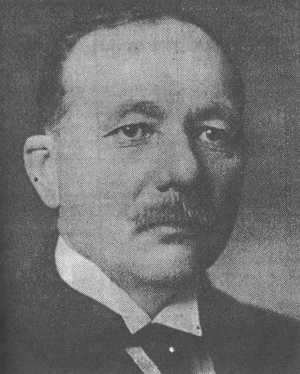
Thomas Brusegaard
Courtesy of Hill City News
By 1925, the area adjacent to Hill City began to grow with the farmers producing large cash crops of potatoes and other crops. "Reports from the Hill City Railway Co., show that 25 carloads of potatoes, with a minimum of 600 bushels to the car were shipped over the railroad and transferred at the Swan River junction in the month of October. This means that during that month local farmers received at least $17,000.00, figuring the potatoes at an average of $1.00 per bushel, which is a low estimate of the average, for their potato crop, with many potatoes not yet shipped out. This is the greatest number of cars of potatoes ever shipped out on this line in a single month. The largest number of cars were shipped out of the Mississippi Junction vicinity, Hill City contributing the next greatest amount....A number of cars of carrots, cabbages, and ‘baggas also were shipped and brought considerable money to this region." (Hill City News ~ November 19, 1925)
The timber adjacent to Hill City could not last and so plans were made in 1928 to shut down the Woodenware Factory. "The National Woodenware Co. which operates the mill at Hill City, has made public announcement that its operations there will come to an end before the close of this year. The statement says that the business has been conducted at a loss for some time, due to the fact that logs must be hauled a longer distance than formerly, and several other reasons. The company offers the plant for sale to anyone who can use it, and states that operation will continue until fall so that employees may have time to seek situations elsewhere.
"It has long been expected that the Woodenware company would eventually move out of Hill City and for several years there have been rumors to this effect, but the announcement made by the company last week is the first definite announcement that has been given out." (Remer Record–February 24, 1928)
Efforts were being made to find some kind of industry to occupy the factory. "Coming as a ray of hope, however, in the gloom caused in many places by this cessation of operations, is the announcement by E. A. Stewart, Minneapolis, that he has purchased the entire remaining factory and equipment...Mr. Stewart is president of Northwestern Public Utilities, Inc. which furnishes power to the community, but the purchase is a private matter....Informed by the Chicago office of the National Woodenware Co. that they proposed to shut down cold on December 29, drain their boilers and stop their engines, Mr. Stewart felt the only thing he could do was to purchase the plant and operate it, selling current to his company as the preceding owners had done. He has placed W. N. Dale in charge of the local power plant and has retained several of the former employees.
"Purchase of the factory by Mr. Stewart prevents the immediate wrecking formerly planned, and gives Hill City another opportunity which must be seized at once....If the factory can be utilized by some manufacturing firm, it will present the best kind of an argument for the retention of the Hill City Railroad, and its service." (Hill City News ~ January 3, 1929)
But then tragedy struck again. In July of 1929, the factory caught fire. "Fire demons held almost undisputed sway early Sunday morning at the buildings of the former National Woodenware Co. Factory. The most efficient human efforts were ineffectual, puny and helpless in the power of the flames which burned the plant to the ground....Realizing their impotence under the circumstance, the volunteer fire department....turned their efforts toward preventing the spread of the blaze to the residence section of the south part of the village....Blazing sparks as big as a man's arm were hurled in a steady shower over the south part of the village where every householder mounted guard over his property....People returning from a dance on the East Side noticed the fire and turned in the alarm. But already the flames had made such headway they were impossible to check. With material so flammable that tinder is no comparison at all, bone dry lumber, oil soaked floors and runways, fanned by a light northeast breeze that became a whirling tornado in the vicinity of the flames, the conflagration lighted up the town as in daylight. The glow was plainly visible in the vicinity of Remer and Shovel Lake....The so-called fire-proof powerhouse was almost in the heart of the furnace and its towering smoke stacks and concrete roof collapsed and fell in upon the valuable machinery and instruments housed there. A carload of coal in the bunders burned fiercely for days after other parts had cooled.
"At 11 o'clock p.m. an inspection of the buildings had been completed by W. N. Dale, who was in charge of the property for the owner E. A. Stewart of Minneapolis. At that time all was well. In the intervening two hours a fire started somehow that thwarted all efforts to control. Questioning every person he met, a news reporter finds it almost unanimous opinion that the fire must have been of incendiary origin. The motive is not so plain in people's minds. It is told that strangers were seen going toward the plant Saturday afternoon....Others tell of encountering two strangers at the electrical substation when it became necessary to go out there to re-connect the electrical power which became 'shorted' at instruments in the power plant whence distribution to the village was made. These two strangers are said to have hurried away in a high powered strange roadster at the approach of the workmen." (Hill City News ~ July 18, 1929)
In the early years the street lights of Hill City had been powered by gas. The city soon developed an agreement with the Woodenware Factory to purchase power from them for street lights and for the town's residences and businesses. The south end of town didn't get power until 1926. (Memoir of Earl Lipscy ~ October 23, 1996) When the factory had closed, preparations were being made to set up a substation near the Zyco farm to step down power voltage from the Northwestern Public Utilities Company. Much of the power would be used by some industry if such could be enticed to locate in the old Woodenware building. After the Woodenware Factory fire, power was purchased from R. P. Allen. Allen had a power plant in Remer and one in McGregor with power lines spanning the distance in between. In later years the R.E.A. took over. (Memoir of Don Kaiser ~ November 4, 1996)
Despite the loss of the factory, efforts were made in 1929 to save the Hill City Railroad from shutting down its operations. "....The citizens of Hill City, fearful that the line would be torn up, leaving them without rail connections, got busy and asked Armor and Co. for a price. The company finally agreed to accept a stipulated sum and then the Hill City people were up against it to raise the money. The Great Northern heard of this predicament and came to the rescue with an offer to lend the prescribed amount to the Hill City folks on condition that they operate the line. A mortgage was taken on the property with the understanding that if the line failed to pay, the Great Northern would foreclose....Thomas Brusegaard is president of the new company; George Hankerson, vice president and general manager, and R. L. Abrahamson, secretary-treasurer." (St. Paul Daily News ~ October 27, 1929) The railroad operated for a few more years, but at a loss, and so operation of the railroad came officially to an end on December 31, 1935. (The Rabey Line, by Robert Lemen, page 32)
Alexander (Sander) Olson had a large sawmill operation on the south end of town just south of the wye of the Hill City Railroad. He operated a lath mill near Washburn Lake in the early thirties. After the Woodenware Factory burned, Olson was one of the few heavy freight shippers to run over the struggling railroad in the early thirties and one of the few major industries to employ the area's men. Olson set up a new lath mill in 1930. "When a news reporter visited the lath mill of Alexander Olson Wednesday afternoon, he found it all ready to begin operations with the blowing of the whistle Thursday morning, except for a small pulley, which was expected that day and could be installed in a moment. The first day or two will be spent in breaking in the crew several of whom are as yet unacquainted with their duties.
"With Mr. Olson himself in direct charge, Otto Schubich will manage the yard end and W. Nexon will be in charge of the mill as chief mechanic. Chas. Herrick is engineer operating the steam tractor engine which furnishes the power. Glen Baty will be back as lath grader, John Arends will push a bolter and Merlin Nixon will operate the stripper. Others of the crew are Harl Christensen, E. Saunders, J. Clifford, J. Fetters, C. Pierce, John Arnold, in the mill, Ed Lamont and Joe Bela in the yard and Robt. Hermiston, night watch. Other men may find employment as the work continues.
"First work to be turned out will be an order of pickets. Lath sawing will be the chief line of work, but lumber will be sawed, box lumber and crating ties, etc....According to Otto Schubich, there are now in the yard about 150 cords of lath bolts, 20,000 feet of logs, and quantities of tie cuts." (Hill City News ~ January 16, 1930) Olson's business was now the major shipper over the struggling Hill City Railroad. "Selling of his products has been uniformly good, according to Mr. Olson, and prosperous and is improving all the time. For example, this week, he will ship six cars of 465,000 lath, in addition to some cedar products. Thus far he has shipped out via the Hill City Railway 62 cars of timber products. Nineteen cars have been shipped in, indicating that most of the raw material has come from within short trucking and hauling distance in spite of the statement made previously by other parties, that the timber was exhausted nearby. Mr. Olson expects to ship 100 cars of forest products yet this season.
"A total of about 300 cars has been shipped over the Hill City line since operations were resumed November 1, 1929, and it is expected that 300 more cars will be handled this season. M. J. Salisbury at Rabey probably has been and will be the heaviest shipper this year, shipping raw forest products entirely." (Hill City News ~ April 10, 1930)
With the loss of the Woodenware Factory and a number of other poor economic conditions, the First State Bank of Hill City was forced to close in 1931 and was put into receivership. "First State Bank opened its doors again Monday morning under direction of C. P. Daily, as receiver. Patrons may now have access to their deposit boxes and make such inquiries as they may desire of Mr. Daily....He (Daily) started work at once to ascertain what collections can be made and what the exact conditions of affairs are, but that is a matter which will require a great deal of time. Mr. Daily expects to be here a year....Mr Brusegaard has also been at his desk much of the time. He will maintain his office there to continue his insurance business." (Hill City News ~ December 24, 1931 By October of 1932 after all efforts were made to call in loans and pay the depositors, the First State Bank of Hill City was no more. (Hill City News ~ October 13, 1932)
The local farmers operated the Hill City Creamery until Clarence Beerbower bought it in 1932. The co-operative creamery had gone out of business due to high debts. (Remer Record ~ May 27, 1932) He moved the creamery business into the old roundhouse in 1936. (Hill City News ~ April 16, 1936) In 1946 Beerbower sold the creamery to Morris and Monroe Peterson. (Hill City News ~ February 7, 1946) The creamery then ran for a few more years under the Petersons until it closed for good. Some years later Miron Dagel opened a sawmill in the roundhouse building. (History of Hill Lake, by Paul Bauer)
Delbert Rabey sold his Rabey Flour and Feed Company to the Farm Bureau who placed Leslie Harthan in charge. The feed store was put in the old depot building and living quarters were set up there as well. (Hill City News ~ August 20, 1936)
The area farmers from Hill City to Swatara joined together in 1933 to rid the countryside of vermin. "Perhaps a few crows are left after the first week of the vermin hunt contest between Swatara and Hill City Game and Fish Clubs but the Swatara hunters were sure after the ground vermin. A total score of 34,300 points was rolled up with 100 crows, 700 gophers and 278 woodchucks, of which were several litters of tiny young still alive, as compared to only 7,730 points for Hill City." (Hill City News ~ May 11, 1933)
Fire destroyed another business in 1935, and Hill City was set back once more. "Early Friday evening an alarm was turned in, the local firemen (rushed) to the scene of the Alexander Olson sawmill, which was completely burned to the ground. The flames had such a start by the time the firemen arrived that nothing could be done. The mill was located at the southeast edge of town, where it could not be reached by fire facilities....Mr. Olson had the mill in better shape this year than it ever was since he moved it here in 1929 from Washburn, having added a shingle machine. In order to cut down expenses he built an apparatus to convey the saw dust from the buildings so it would not have to be hauled away. He dropped the insurance and kept no night watchman....This year he (Olson) intended to run steady through the winter and hire 7 men, having a contract to saw 60,000 berry pickets besides sawing lath, shingles, etc. He does not plan on rebuilding this mill and use steam power, but if he should he intends to use large motors." (Hill City News ~ November 28, 1935)
A new store was opened in town in 1936. " A new hardware store will be established in Hill City. H. C. Eichorn of Minneapolis has leased the store building formerly occupied by Fitzpatrick and Richard and expects to be ready for business about June 1st. We are informed this store will be complete in every respect and it will fill a real need for this community. It will be known as Associated Stores. We welcome this fine family to Hill City and wish Mr. Eichorn much success in his business venture." (Hill City News ~ May 21, 1936)
In 1937, a new dam on the outlet of Hill Lake was constructed as a federal work project. Around 1939 the old wagon bridge was taken out when a fill was placed in Hill Lake for State Highway 34. (History of Hill Lake, by Paul Bauer)
One interesting thing about Hill City was its barbers. For a number of years Joe Saylor had a pool hall and barber shop. In more recent times Chet Sailor had a pool hall and was a barber too. Similar businesses and similar names in the same town. (Memoir of Margaret Martin ~ November 25, 1996)
In 1941, a community fair was held at Hill City. "The 1941 fair is now a part of history, but it was a good fair in spite of numerous handicaps. Showers of rain Friday rather spoiled things during the day and evening, but Saturday was bright and clear. During the day there were not as many visitors as last year but evenings brought large crowds. Friday evening a large number of Grand Rapids people were here along with the Grand Rapids band, which gave an excellent concert, in spite of the dampness. Many compliments to the visiting band were heard on the street.
"Perhaps there were not so many exhibits this year, or it may have been that the larger display room made it appear so. It was disappointing that more farmers did not make general displays, but the exhibits were very good. (Hill City News ~ September 11, 1941)
New forestry buildings were built in town by the state in 1942. More buildings were added in 1968. (Per letter from Timothy Donovan ~ DNR Area Forestor dated November 20, 1996)
By 1942, Hill City was feeling the effects of World War II. A number of the area's young men went to fight for the nation's cause. One young man became noted for his proficiency as a fighter pilot. "Major Don Beerbower, top ace of the ninth air force in World War Two, had 20 and ½ planes to his credit when lost in a mission over Reims, France in September 1944. (Minneapolis Tribune, date unknown) He was declared killed in action on August 9, 1944. Other family's paid the ultimate sacrifice with the loss of loved ones. John Bishop was killed in Germany on October of 1944. Others killed in World War II were George Boleman, Glenn Faust, George III, Robert Johnson, Elmer Potvin, Urban Rassatt and Myrle Weston. The Korean War also took Thomas Humphrey.
The Hill City farmers formed the "Quadna Grange No. 701 in the late 30's. They met at first in the town hall. "Quadna Grange....met March 10 with a large crowd and only one officer absent. It is the first meeting all winter when we have had most of the officers present. Alice Oliver, Bessie Oukrup and Marvin Weller were taken in as new members. Our plays are near completion and will soon be ready to be given. We voted to give a shower and party at the John Roskos home for Earl Oliver's Sunday the 19th. It was largely attended. They received a number of lovely gifts." (Hill City News ~ March 23,1939)
In 1946, the Grange held a fair for the local farmers. "The prizes of the Grange Fair held October 4 were awarded....The business firms donating prizes for this fair were: Red Owl; A. L. Wynkoop; J. E. O'Konek; Silver Grill; Eichorn Hardware; Bill's Hardware; Hill City Creamer; H. G. Nelson garage; and Art Heath of Swatara. (Hill City News ~ November 7, 1946)
The Grange Club then built a hall in 1947. "Quite a long time ago the Quadna Grange decided that the Hill Lake town hall was too small to accommodate the fast growing membership and it would be necessary to provide larger quarters. This led to what seemed like endless discussions without much being accomplished. Just who first proposed to build a Grange Hall we do not know, but the idea took the fancy of the members and a building committee was appointed to look into the matter and find a good location.
"....No, it was no easy job the building committee had on its hands. But these Grangers are persistent people and eventually 250 feet frontage on Forest Avenue (Highway 34) west of Main Street was purchased. And a short time ago a foundation was laid and actual building started. When the news man visited the scene on Saturday he found the outside walls erected and covered with rubberoid siding and inside we found Ed Lisk and John Yohn engaged in laying the floor, while Harry Bainwin was making window frames.
"Practically all the labor on the building is being donated by members of the Grange. The building is 30 X 50, which will provide ample room for the meetings and social times. Provision is made for an addition to be added later for use as a kitchen, but for the time being a portion of the main hall will be used for that purpose. (Hill City News ~ September 18, 1947)
In 1949, a Junior Grange was established. "A teenage dancing party at the Grange Hall Friday evening. January 14, (is being) sponsored by the Juvenile Grange. A charge of 25 cents will be made for lunch. All teenagers come and have a good time. Charlie Washburn and his accordion will make the music." (Hill City News ~ January 13, 1949)
In 1948, the Boy Scout Troop No. 75 was organized with Kenneth Stevens as Scoutmaster. "Meeting was opened by Dean Christensen after recreation period. Penalties on swearing, smoking and on being tardy and absent were discussed. A light lunch was served at the Silver Grill." (Hill City News ~ February 5, 1948)
Disaster struck the Methodist Church on December 31, 1950 when the church caught fire and burned. Construction of a new building took place over the next few years, and the new building was dedicated on October 13, 1957. (Memoir of Della Gallea ~ August 14, 1996)
In 1952, Harvey Rassier built the motel on the north end of town along Highway 169. He sold the motel to Lee Santwire who then sold out to Dean Christensen. The motel has had a number of owners over the years. (Per telephone conversation with Mike Rassier on November 22, 1996)
The Lakeside Garage was bought by Bill Nass in 1963. The building became known as Hill Lake Manufacturing. Dean and Audrey Christensen bought the business in February of 1967 and named it Lemco. They had a fire in 1990 and then moved the business to the old Hill City School. They currently have 13 employees making seven models of truck loaders, 2 models of slashers, delimbers and grapples and have 30 dealers throughout the country. (Per telephone conversation with Dean Christensen on November 13, 1996).
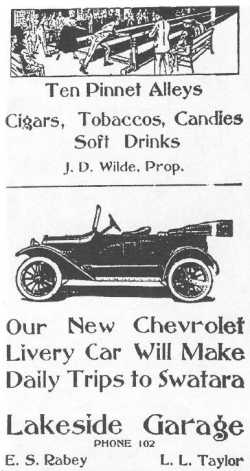
Newpaper Ads
Courtesy of Hill City News
In the sixties, the Kimballs had moved their peat and Christmas decorating business to Hill City. "We had purchased the old Gem Theater building at Hill City and then we later moved west of town on Highway 200. We got a grant from the I.R.R.R.B. to set up a peat log making business for Christmas fireplace fires. We used a mixture of peat and wax. The wax would splatter and there were liability issues and so we gave up on that idea. We sold many wreaths to places like the Holiday convenience stores. We decorated towns all over and had the contract with the city of Mora for a number of years. Frank made an evergreen roping machine and eventually we had four machines going and employed up to 20 people in peak times. We sold wreaths as far away as St. Louis, Missouri." (Memoir of Mary Lou Kimball ~ July 29, 1996)
During the early sixties, Thomas O'Fallon spent some enjoyable fall days hunting around Quadna Mountain with his friend Edward Wortman. After climbing the hill one day, Tom mentioned to Ed, "Wouldn't this make for a great downhill ski resort?" The idea began to take root and soon it became an ever-driving mission for the two men. During this time Ed Skinner of Grand Rapids had tried to get the men interested in the hills in Itasca County known as Sugar Hills. O'Fallon was not sure of its prospects there and so he settled on Quadna. The sport of downhill skiing was beginning to take off and the moment seemed right. Unfortunately for the two men, Ed Skinner also felt the moment was right and started up the competing enterprise at Sugar Hills. Undeterred, O'Fallon and Wortman began their project. The first thing they had to do was to acquire a significant amount of land, and so in 1962, they bought a farm, where the Hill City airport is no located, and other adjacent lands. Soon they had about 1,100 acres to use for the resort. The airport was started in 1967 and largely finished by 1973. (Minneapolis Tribune ~ January 14, 1973) It was later donated to the village in a cooperative effort so the village could make further improvements.

Good Times Skiing at Quadna Mountain Resort
Courtesy Quadna Mountain Resort
In 1964, a 48 unit lodge was constructed. "Roaring bulldozers and snarling chain saws are carving ski slopes and golf course fairways in what was once quiet Quadna Mountain south of Hill City. And at the south end of Hill Lake, a sprawling, 412-foot lodge is rapidly taking shape. Quadna Mountain Corp. president Tom O'Fallon and vice president Ed Wortman are hopeful that the lodge will open its doors by the middle of October and that skiers will whiz down the slopes this winter. Fairways on the nine-hole golf course will be seeded this fall, greens will be sodded in the spring and the golfers will probably tee-off next summer." (Grand Rapids Herald Review ~ August 27, 1964) Next the chalet was built and the 1964-65 winter was the first year for downhill skiing. At that time Quadna had two T-bars, one tow rope and 14 runs. Bob Leper was hired to be the ski instructor for the lodge. Work began on a golf course and soon nine holes were completed. There was an attempt to build a second nine, but lack of funds prevented its completion.
By 1973, the facility had added the large indoor tennis center, the town houses, another 48 unit motel and the campgrounds. Things seemed to be going well for O'Fallon and Wortman. Then the energy crisis of 1973 hit the country. Gas lines were the norm and it was difficult for people from the cities to travel up to Quadna. People stopped coming. The energy costs of running the facility skyrocketed. "We could hardly afford to turn on the lights in the tennis center as the cost of power had also gone up. At this time the Blandin Foundation came to the aid. They were willing to help businesses in the area to keep them afloat. Soon they had so much invested in the resort that they started to buy it outright. Ed Wortman sold out his interest first, and by 1974, he was gone. Then Thomas O'Fallon sold out in 1977." (Memoir of Dave O'Fallon ~ October 9, 1996) The foundation ran the resort having plant functions there and trying to make it viable. When the tax laws were changed with regard to foundations in 1979, the Blandin Foundation was forced to sell the paper mill and Quadna Resort. The resort was sold to Nazir Kazimar.
Kazimar had big plans, and he immediately put in an expensive four person chair lift. Chuck and Bonney Erickson of Detroit Lakes bought in as partners, and they introduced the idea of the time shares. The Ericksons bought out Kazimar in 1983. The time shares didn't work out and the resort continued to experience financial trouble. The employees went unpaid for a time and finally walked out in frustration. The resort went through a series of partners and receiverships until it was sold to the Church of God of Anderson, Indiana in 1996. The church ran the resort until they sold it out in 1997 to Korean interests. There are now plans to make more improvements, and perhaps this time, the resort will turn into a profitable enterprise.
Snowmobiling got started in the sixties and was very popular around Hill City. In December of 1970, the Haypoint Jackpine Savages was formed with 16 members. The main trail started that year traveling from Haypoint to Hill City. They started out with only 18 miles of trails. The clubhouse was built in 1989, and now the club maintains 154 miles of trails. (Per telephone conversation with Robert Hidde on November 13, 1996)
In 1976, many of the old buildings in Hill City such as the Quadna Hotel, the old theater, and others were taken down. Jerry Fixmer got started in his concrete business about that time. Two tornado's hit Jerry's cement plant over the years.
The need to care for the area's seniors was recognized with the construction of the Hill City Manor Home built by the H.U.D. Authority in 1974. Other apartments for seniors were built near the forestry offices in 1976.
In 1976, a tornado struck Hill City. "According to reports received at the Aitkin Sheriff's Office at 8 p.m. last night, the twister apparently touched down by the retirement home at Hill City at about 7:25 p.m. The storm tore up a number of trees and power lines before continuing across Hill Lake and lifting. Windows were also reported blown out in a number of houses in the area." (Hill City Saga ~ July 4, 1955)
The Roadside Market was purchased by Bill and Elaine Klennert in 1978, who then made several improvements over the years.
In 1978, a home study Bible group formed and met at the Jim Lee home. This progressed to a larger group and so the meetings were moved to the Hill Lake Township Hall in 1981. In 1984, this group built their Baptist Church east of town on Highway 200. A second building was built in 1992 with the older building used for Sunday School and food shelf, and the newer one for the sanctuary. Lonnie Lee is the membership's pastor. (Per telephone conversation with Lonnie Lee on November 6, 1996)
In 1983, the Swatara School was closed and merged with the Hill city District. In September of 1983, the first classes were to be held in the new Hill City School, which had just been completed. (Per letter from Darrell Nelson dated 10/16/96)
The early seventies saw Swatara deal with the experimental city. The early eighties sent Hill City into the center of controversy with the proposed state hazardous waste site. In 1982, the State of Minnesota was having a problem with the hazardous waste that was being generated in the state. There were no sites available in the state to deal with the waste and so most of it was sent to other states for disposal. It was a costly way to dispose of the waste and some of the states were saying that they might refuse Minnesota's waste. In response to this issue, the legislature set up a study commission to look for possible sites within the state. Counties were offered money to use in the search if they were willing to be a part of the process. Originally, there were fourteen sites selected as possible locations for the hazardous waste facility. One by one counties opted out of the search and the Pollution Control Agency dropped more sites until Aitkin County remained the lone candidate for the site.
There were two sites being considered in the county, one being known as the Rice Lake site and the other as the Hill City site. The proposal was to construct an underground facility for the waste. By 1983, the issue began to heat up as it appeared that the Hill City site might be selected. A local committee of interested citizens near Hill City formed to study the issue. Opposition increased when the local residents pointed out that an underground facility at Hill City could not be constructed due to the high water table. "....The Waste Management Board had originally considered the site for a below-ground disposal unit but withdrew that proposal after the Minnesota Pollution Control Agency labeled the site unsuitable for such a dump because of possible ground water contamination....An above-ground disposal site would take shape in a concrete storehouse where hazardous wastes would be housed in metal drums...In addition to possible contamination of ground water and prohibitive high cost, Hill City is concerned how having a hazardous waste site in their area will affect the business climate, in particular, Quadna Mountain...." (Minneapolis Tribune ~ February 9, 1983) The legislature was put under pressure to drop the whole idea. The process stopped in May of 1984 when the legislature extended the study for two more years, and finally the Waste Management Board dropped the site altogether. (Aitkin Independent Age ~ May 2, 1984)
Ed and Dee Rassier run Rassier Enterprises, which consist of bus services and road construction. They took over the business from Nick Rassier and Dave Hector who started it about 1950. It was in 1972 that the road construction business got started, which employs about 2 0 people. (Per telephone conversation with Dee Rassier on November 14, 1996) Ed and Dee Rassier started a snowmobile business in Hill City, which they ran for a few years and then sold out to Harlan and Elaine Kingsley. The snowmobile industry has exploded in growth in the 1990's and so the business at Hill Top Sports has been a good one.
Two River's Trade Company was started in 1992 by Jim Lee near the intersection of Highways 169 and 200. Hill City Showtime Video used to be called the Sports Shop. Hill City had a Dairy Queen for a few years and the business is now known as Jane's Family Restaurant. The Heartland Carwash was built by Pat Hilton about 1985. The local telephone company had been passed down from Frank Dichtel to his son-in-law Ron Christensen. They sold the business in 1991 to Pacific Telecom International of Vancouver, WA. The new American Legion building was built in 1992.
On April 12, 1993, the old Chet Sailor Pool Hall was purchased by Leonard Clark, James Lee, Vernon Bishop and Donald Laplant. They remodeled the building and started up the Mountain View Stage. On May 22 of that year, the first performance was held which began its bi-monthly "opry" or music night. Local blue grass and country music artists often perform to a packed house. Since that time, shows have been presented every other Saturday night through the summer months to the delight of local residents and vacationers who happen to be in the area. I 1993, Don Laplant and James Lee sold out their share of the business and Basil Bowman bought in. (Per letter from Len Clark ~ May 10, 1997)
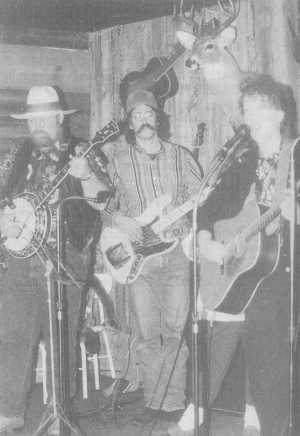
A Performance at the Mountain View Stage, 1993
Pictured: Jim Lee, Don LaPlant, Debbie Lee
Courtesy of Leonard Clark
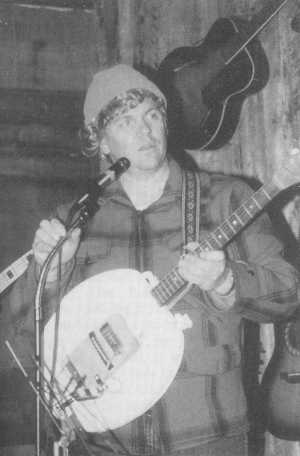
Leonard Clark as “Sven”
at the Mountain View Stage, 1993
Courtesy of Leonard Clark
In 1994, Ed Pierce built the Hill City Storage business. MnDOT built a wayside rest off Highway 200 east of town in 1995. That same year saw Dave Lange build up his nursery business.
The northeast corner of the intersection of Highways 169 and 200 was the site of the old Sonny's Gas Station. This site was purchased by Bill Klennert and a new store and gas station was built in 1997 and is also called "Sonnys."
Hill City got its bank back when the Woodland Bank of Remer purchased the old Legion building and remodeled it into a branch bank. Now the residents of Hill City could once again do their banking locally.
After a number of years of hard work and extensive planning, the Hill City bike trail became a reality. A beautiful trail now winds its way from town to Quadna Mountain Resort. The paved trail is a boon to bikers and those who just wish to go for a nice walk.
Other businesses changed hands over the years. Hill City has survived the many blows to its businesses and farms and yet the city and its people continue on. The area is seeing a new vitality and new businesses are being established. Improvements are also being made to the city's infrastructure.
Each Fourth of July the town's people gather together to reminisce and enjoy the fellowship of good friends. Hill City is a truly scenic city located on a beautiful wooded knoll, nestled in the graceful curve of the deep, clear Hill Lake. Hill City is here to stay and its people are proud of the accomplishments and progress that has been made over the years.

A Patriotic Gathering in Hill City, 1918
Courtesy of Bill and Esther Lange

BACK
HOME